














A review of the Accredited Employer Work Visa (AEWV) scheme which was introduced to address post-Covid work shortages, has found it was open to exploitation by unscrupulous employers, but changes to the scheme now have many across the agricultural industry worried they may not be able to get the staff they need. P10-11


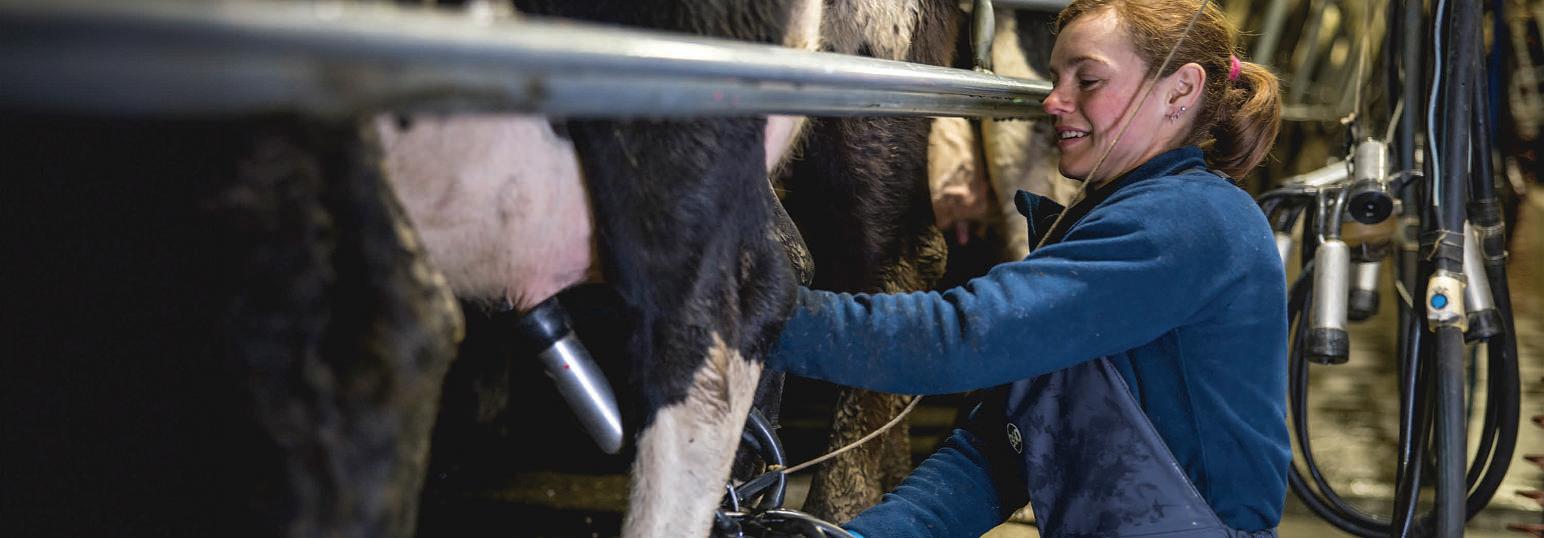
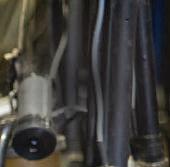
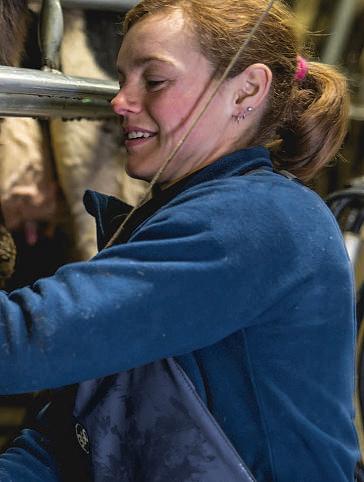








Two lobby groups are combining forces to work together on wool’s comeback. By Eve Hyslop.
Anew strategic alliance between Wool Impact and Campaign For Wool NZ is leading a revival in the industry, aiming to increase demand and gain higher prices for wool.
“Wool is on its way back,” according to Wool Impact’s chief executive, Andy Caughey. “Growers will say ‘Yeah, we’ve heard it all before’. But we’re there. We’re out there speaking with brands.”
A newly formed strategic alliance between Wool Impact and Campaign For Wool NZ (CFWNZ) will see greater support for the wool industry and a move toward increased demand and better wool prices. More optimism has also come on the back of improved government support for wool
An agreement between Wool Impact and CFWNZ was signed in late February, outlining how the two parties will collaborate to drive change within the strong-wool sector.
“This is a great evolution for the strong wool sector. It’s a reallyvaluable development, because it means that we’re aligned in terms of our core activities,” Caughey says.
CFWNZ chairperson Ryan Cosgrove says the signing creates an exciting collaboration toward the future of New Zealand strongwool. “Both organisations have, for a long time, seen an opportunity to team up on a number of plans, projects and purposes.
“Formally, outlining what those shared goals are, achieving alignment on those goals, and limiting the possibility of duplication when working towards achieving outcomes is a huge step forward for the industry.”
The alliance is outlined by six key projects which aim to increase the demand and value for wool through joint communications, develop an evidencebased wool story, deliver resources, contribute to the International Wool Textile Organisation, facilitate wool-related events
and investigate framework.
Caughey says constructing a wool story that attracts consumers, growers, manufacturers and government is vital to driving wool’s value and demand.
“We’ve all got to elevate the quality of information, how we’re sharing it, and the repositioning of wool as a technical performance fibre that’s well suited for the home environment.”
Placing evidence at the forefront of an ‘attractive wool story’ will restore wool’s position not only in the consumer market but within building procurements.
“Part of that evidence-based story is in support of the specifications that are driven by architects or building standards one is providing evidence and two is romancing it in a way that’s appealing and aspirational,” Caughey says.
A step further than the story, the alliance intends on working with government procurement agencies to create framework that gets wool into specifications over synthetics. One such framework with specifications that didn’t favour wool was the Government’s procurement for synthetic carpet tiles to be installed in 600 rural schools over woollen carpets.
“Moisture absorption was a fault they saw in their framework, because of mould growth. Which makes sense at surface level because wool does absorb moisture very well But it’s antimicrobial and it breeds that moisture back. So it regulates humidity in the built environment and it actually creates a much healthier space,” Cosgrove says.
Caughey says for future procurements, aspects of wool need to be considered beneficial rather than a fault, like moisture absorption “We have to understand what the specifications were and be responsible and reactive. We’re challenging those who are writing the specifications to be broader in their understanding to accommodate some of those real inherently natural features of wool.”
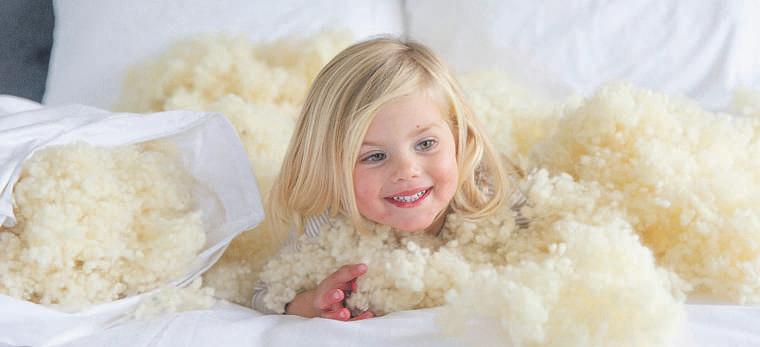

A significant development since the procurement for synthetic carpet in schools is a new Government directive for wool to be chosen over synthetic materials in agency building specifications and modifications.
To ensure mobilisation of the policy, Caughey says that Wool Impact is connecting the Government with brands and manufacturers who produce wool products. “Their policy also sends a very clear message that if it’s good enough for Government to be putting it into their buildings, then it’s good enough for a commercial entity to be putting wool products into their office.”
Caughey says getting wool into commercial buildings will increase demand while supporting healthy work environments. “We’re able to look at improving the working environment, whether it be air quality, acoustics, or aesthetics and look at reducing the carbon footprint of those office environments.”
According to WasteMINZ, 148,000 tonnes of carpet goes into New Zealand landfill every year, more than 130,000 tonnes of that being synthetic carpets. Caughey says New Zealand wool would hold a strong place in this market growing 100,000
Pillows are just one simple way in which wool can be used in bedding, furniture or homeware

Campaign For Wool NZ chairperson Ryan Cosgrove, left, and his Wool Impact counterpart Stuart Heal are working to extend the opportunities for wool through the lobby groups’ strategic alliance.
AndyCaughey, WoolImpact’s chiefexecutive, isconfidentthat woolismakingits comebackfrom dismalprices
tonnes of strong-wool every year.
Caughey says depressed wool prices can only be cracked if the industry works as a collective and although motivation may be low for growers, it starts with them.
“We need our growers to take the time to grade and class their wool properly and be proud of what they're producing, so that we can take New Zealand's strong-wool off internationally and be telling their story to a global market.
“We’re actively saying to our growers, stick with wool, because in the next two years we could be talking $5 per kilogram.” Cosgrove says if collective projects like the alliance continue, the Government will see the intent and have faith in wool.
“Industry leaders like us, like Feds, like Wool Research Organisation of New Zealand, all need to be singing from the same song sheet I think the industry is more united behind a common message.”
Despite dismal wool prices, Caughey says demand should increase as people make the move toward sustainable fibres. “About 15% of our wool is consumed domestically, and 85% of it goes overseas we’re anticipating the growth of wool consumed domestically going from 15% up to around 35% within the next five years.” ■



The Accredited Employer Work Visa (AEWV) which was rolled out after the Covid-19 pandemic is faulty.
Introduced in 2022, the visa replaced the Essential Skills Visa and was intended to speed up the work visa system to address the workforce shortages after the pandemic. Employers wanting to hire overseas staff could apply for accreditation meaning applications could be sped up
It came under fire and a review last year found the scheme was falling victim to dodgy employers and agents exploiting their immigrant workers In one of these cases, 115 Indian and Bangladeshi migrants were crammed into six houses Despite the promise of jobs, there were none when they arrived.
But this isn’t the first time. There have been many reports of immigrant exploitation reported by Stuff over the years but the visa scheme appears to have created an even bigger problem.
Widespread changes to the AEWV, introduced on April 7 by Immigration Minister Erica Stanford, have many in the agricultural sector worried about what it will mean for them. But some of those changes must be better surely
An English language requirement for low-skilled roles has to make life easier for employers, as being able to communicate what is required is essential. Trying to get a non-English speaking employee

to understand is hard work and timeconsuming. For the employee, it will enable them to understand the job and its requirements, but also understand their rights. It gives them a voice should things not seem above board.
Jobs must be listed for 21 days and immigrant workers must have a relevant qualification and three years of experience in their field.
Low-skilled workers who could previously be approved for a five-year visa can now only get a two-year visa, with a potential for a third year before a one-year stand-down period.
Farmers have said it is already hard enough to find staff and these changes will only make it harder. At the end of the day, it could end up being a throwback to when the global financial crisis hit or times when the payout has plummeted and costs had to be cut.
Now many farmers and their families may again have to roll up their sleeves and pitch in But this isn’t quite so easy in sectors such as horticultural, where hundreds of seasonal pickers are employed.
Alternatively, the agricultural industry may have to look to their fellow Kiwis, but again this is tough. Employers tend to hold on to their skilled, experienced and good staff so they are not easy to come by.
Taking on a novice with little skills or experience is not always the best option – unless the employer is prepared to work alongside and teach them one-on-one
to get them up to speed. However, the problem is this: When the work has to be done and there is more work than time during the busiest periods, it makes things even harder for farmers and teaching could fall by the wayside.
Industry leaders are working on it with the minister to minimise the effects of these changes. Yet these measures may come too late for some, especially dairy farmers as they head into the new season and the busiest time of the year, calving. At best, they have six weeks to get their employment needs sorted
There are many more changes that have taken effect and more to come. Whatever happens, the agricultural industry is in for a bumpy ride. ■
Get in touch with us at nzfarmer@stuff.co.nz

Farmers have said it is already hard enough to find staff and these changes will only make it harder.








Two sector leaders with years of experience between them, have resigned their posts leaving their respective organisations searching for new chief executive officers. By Sonita
Chandar.In the space of one week, two sector leaders have resigned leaving big shoes for their successors to fill.
Beef + Lamb New Zealand’s Sam McIvor will leave his chief executive roles at that organisation and the New Zealand Meat Board (NZMB) on July 24
McIvor has worked for Beef + Lamb New Zealand (B+L NZ) for 17 years, including the last eight years as chief executive.
“The board would like to thank Sam and acknowledge the significant contribution he has made to B+L NZ and to the sector in the 17 years,” B+L NZ chairperson Kate Acland says.
“We are delighted that Sam has chosen to continue with a role in the agriculture sector and are confident he will continue to make a positive impact in this position.
McIvor says it’s been an honour to work in and lead the two organisations over two stints, which have totalled almost half of his working career
“The work B+L NZ and the NZMB do is critical to the sector, and throughout my time, a standout feature has been the


passion, capability and hard work of the staff to delivervalue for farmers. It’s been a privilege to work with and lead them.”
He says their work has not been possible without relationships across the wider agribusiness community, industry and government.
“I’ve enjoyed immensely the camaraderie and challenges from addressing issues and opportunities together
“Our farmers, of course, are the bedrock and beating heart of the sector and I’m immensely proud of our farmers who have always been frank, welcoming, world-class operators and committed to playing such an important role for New Zealand.”
McIvor will continue with many of these relationships in his new role as chief executive of OSPRI, New Zealand’s integrated animal disease management and
traceability service provider. He will begin there in August.
OSPRI board chairperson, Dr Paul Reynolds says: “Sam’s extensive experience, coupled with his profound understanding of the agricultural sector, uniquely positions him to drive OSPRI forward and deliver value to our shareholders, stakeholders and the farming community.”
McIvor says he’s honoured to have been appointed as the chief executive of OSPRI.
“I am passionate about the work OSPRI does to support New Zealand’s primary industries, and I am committed to driving its mission forward with determination and innovation.”
He will replace OSPRI chief executive Steve Stuart, who has stepped down after five years.
Another sector leader who has resigned
is Nadine Tunley, chief executive of Horticulture New Zealand. She will leave the organisation on August 30.
Tunley has been at the helm through some challenging times for growers, including the Covid-19 lockdowns and Cyclone Gabrielle’s devastation.
Through her steadfast leadership, she continued to drive the internal organisation through the transformation necessary for it to succeed, as well as to open the door for further alignment within the horticultural industry’s levy organisation landscape.
Tunley says this was not an easy decision to make.
“I love the job and the team and working with dedicated and passionate growers. But the role is bigger than the time I can commit to it moving forward. I want to restore my work-life balance and explore new opportunities.
“I have worked closely with the board over the past three years to ensure HortNZ has a strong team, strong structure and strong direction, set out in the strategy and the Aotearoa Horticulture Action Plan.
“With the commodity levy referendum in May/June, it is now time to hand over to someone with fresh energy to take HortNZ forward.”
HortNZ board chairperson Barry O’Neil acknowledged the contribution Tunley has made to the sector, saying the board is disappointed to see her go.
Although the timing is never ideal, he and the board feel it is important that with a new commodity levy proposal about to be voted on, HortNZ is able to recruit a replacement chief executive who can lead the organisation and deliver the strategic outcomes for the next six years, with the full energy required. ■




Andrew Stewart is a fourth-generation sheep and beef farmer in the Rangitīkei region. He writes regular columns for NZ Farmer.
Recently, I bought my wife a wheelbarrow. It’s a beauty, something she would never have bought for herself and a tool that will make her busy gardening life much easier.
I bought it online, it was delivered without delay and we couldn’t have been happier with the product
Out of the blue, I received a phone call from the owner of the engineering company that made it. He was just checking that I had received it, but during the course of the conversation, he proceeded to tell me about his business and the troubles it was facing. Sales and work had all but dried up, he was struggling to pay long-term workers and he was considering whether to close the doors for good. All offered without any prompting from me during a five-minute conversation. I simply offered him a listening ear.
On top of this discussion, I have had many similar chats with business owners in our region who are doing it tough. And I have also read, on a weekly basis, stories of previously strong, iconic national companies either laying off large chunks of their workforce, closing down voluntarily or being placed into receivership.
I am not an expert on economics, but I know if I am hearing and reading about failed businesses in my small corner of the
Anonlinewheelbarrowpurchase wentwellbuttheensuing conversationaboutbusinesses strugglingisbecoming commonplace.ANDREW STEWART

country, the reality must be far worse.
In my humble farming opinion, much of the financial pressure stems from the Official Cash Rate (OCR), which is set by the Reserve Bank of New Zealand.
It was stuck between a rock and a hard place during the Covid-19 pandemic as there was a real risk of sending the economy into a recession
As a result, the OCR dropped and was held at a historically low rate for a sustained period of time. This resulted in the very low

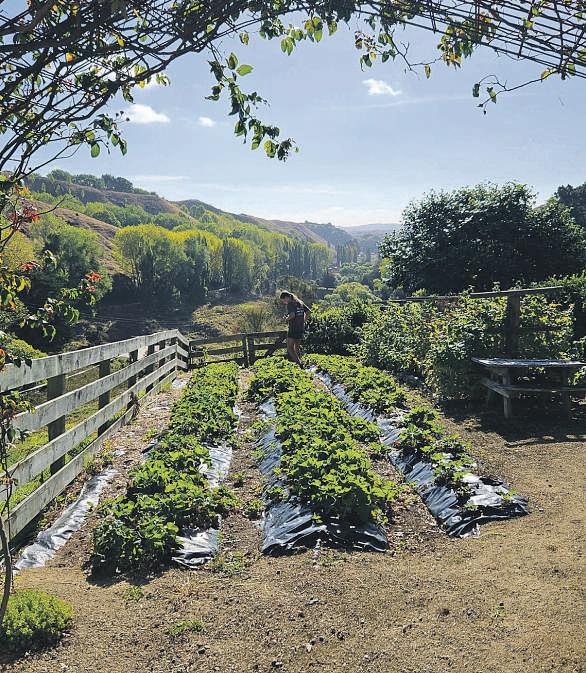
interest rates that were offered by all the banks, which in turn caused a seismic shift upwards in propertyvalues.
Unfortunately, as this buying frenzy gripped the nation, inflation skyrocketed and so did our cost of living. The Reserve Bank was then forced to try and rein in the rampant inflation by increasing the OCR to a level where interest rates would dissuade Kiwis from borrowing.
And by holding the OCR at a high rate, the Reserve Bank has finally slowed
inflation but there has been significant damage done to the economy. Many who borrowed at very low interest rates have now found themselves having to accept interest rates that may have doubled or even trebled. And I won’t even go into the pain that all Kiwis experience when buying their weekly staples like food and fuel. There is no argument among sheep farmers that this year is one to forget. We can only hope that current economic conditions are a “speed bump” and not the new normal. But the massive financial pressure that the primary sector is now under is having a ripple effect throughout all aspects of business. Put simply, when farmers stop spending, the whole economy suffers.
We must remember though that there are many others who are struggling to make ends meet, many businesses we interact with who are facing permanent closure, and many staff facing the reality of losing their jobs. These are people who need support and sympathy, not scoffing and cynicism.
And sometimes they simply need someone to listen ■
Beef + Lamb New Zealand
chairperson Kate Acland says diversity and innovation in farming businesses is essential to protect the industry.
Lately I’ve been thinking a lot about diversification and how we mitigate risk. Sheep and beef farmers will have different strategies to deal with the financial pressures Every farm is different and farmers make decisions based on their individual circumstances. On our farm, we run a strategy of deliberate diversification, not just in stock class and enterprise (we’re sheep, beef and dairy – with a bit of honey, forestry and wool thrown in) but also diversification in how we market our stock
We have a long-standing relationship with a single processor, but we also sell store stock through an agent, send animals to the sale yards, and have an annual on-farm store lamb sale. The key for us is flexibility both in how and when we market our animals – which is critical for most of us
who are at the mercy of weather.
Our relationship with our processor is key – they haven’t always paid the highest dollar, but we buy into their market strategy, the story they are telling and the direction they are trying to take our product.
How we choose to market our product is something we don’t talk enough about as farmers. We talk a lot about being price takers and who got the highest price, which is true to a point – but we do have options.
We hear a lot of talk about New Zealand’s over-exposure to a single market (China), and we’ve felt the impact on our farm gate returns due to the weak conditions in that market. China’s an important market for some of our cuts, and we have a strong weighting towards that market – when returns were strong, we were all happy. Currently, we’re less so.
A lot of our processors are diversifying away from China to the likes of the UK, EU, North America and the Middle East.
The importance of free trade and having alternatives has never been so important.
B+LNZ was actively involved in the negotiations in-market around the two most recent Free Trade Agreements and we continue to maintain an active presence in these markets, managing our access, nontariff barriers and domestic sensitivities.
This role is increasingly important as protectionism grows globally.
As farmers, we should be interested in our processors’ strategies, where they market, who are their customers and what consumers in that market they’re focused on
Two years ago, when China had an insatiable appetite for our lamb, would we have been happy for lower returns in the short term if it tied into a longer term diversification strategy – or would we rather just supply the one paying top dollar at the time?

whole carcass – in 1990 that was over 50%. That may not feel like we’re capturing value – but that represents a significant shift in the returns we’ve received at the farm gate. We’ve also seen development of a substantial market for the ‘5th quarter’ – that’s capturing value for ingredients for the likes of vaccines and life-saving drugs
Beef+LambNewZealand chairpersonKateAcland saysfarmersshouldlook towardsdiversifyingtheir businesssotheydonothave alltheireggsinonebasket
Do we get clear signals from the markets? Does it impact our practices on farm and should we care? It’s our role as farmers to produce the best quality product we can with a view to what the market wants. It’s the processors' role to maximise that value capture.
Generally speaking, our processors do a good job of creating value through carcass split. They capture value through sending specific cuts to the specific markets that will pay most for them.
Around 2% of our lamb is now sent as
The New Zealand Farm Assurance programme that B+LNZ worked closely with processors on is the latest development that will position us to meet changing consumer demands like animal welfare and the environment.
Times are incredibly tough right now. The entire red meat sector, including farmers and processors, must continue to innovate at the same time as we continue to protect and grow our trade access, that is what will help get us through this challenging period. ■
Kate Acland is the chairperson of Beef + Lamb New Zealand and a mid-Canterbury sheep, beef and dairy farmer.
Soil scientist Doug Edmeades looks at whyfertiliser is an essential ingredient to growing pasture and crops.
Jonathan Swift (1667-1745)gaveus
Gulliver’s Travels, but he also had much to say about other things.
One quote thatshould resonate withfarmers is:“Whoevercould make two ears of corn, or two blades of grass to grow upon aspotofground where only onegrew before, would deserve better of mankind, anddomore essential service to his country, than thewhole race ofpoliticians put together.”
This still applies today, with the qualification that we should do these things and, at the sametime, protect the environment
But Iliked the late Professor Walker’s take onit. “Superphosphate,” he said, “has done more good for New Zealandthan all the politiciansput together.”
It was correctatthattimetosingle out superphosphate because it contained the two nutrients–phosphorus and sulphur–most needed on all soils in New Zealand. Today, we wouldprobably use themore general term fertiliserratherthan focus on oneparticular type of fertiliser.
There should be no doubt that, in the New Zealand context, the fertiliser industry is very large. The combined turnover of the twofertiliser co-opsismore than $2billion annually. Butthis, of course, does not tell the big story. Idare say that without fertiliser inputs New Zealand would go broke Imention these mattersbecause,inmy opinion, our fertiliser industry is in for a tough time and will need to fight for its existence.
Economically, things on the farm are grim, especially in the dry-stock sector. Fertiliser is normally the largest itemof expenditure in most farmers’ budgetsand

To make matters worse, competition is stepping up.AnAustralian company, Marnco, has already unloadedashipment offertiliser from that country. It joinsother smaller New Zealand-based operators who aredirectly importingmade-up fertilisers
Just how allthispansout in thelong term is anyone’s guess.
The strength that the twolarge co-ops, Ballance and Ravensdown, currentlyenjoy is the significant infrastructure theyalready have in place –manufacturingplant, supply chains,storage facilities, mixingplantsand, of course, on-farm sales andsupport.
These newcomerswillhavetocompete against this on price, andthiswillneed to factorinthe annual fertiliser rebate –the return onthe farmer’s investmentintheir co-operative.

based advice on fertiliser.
There are other challengers brooding. If the green brigadehad itsway, it wouldclose down the fertiliser industry and it would not give afigifthismeant thatNew Zealand became bankrupt. Saving the planet from human destruction is itssoleconcern.
Against thisbackground,maybe it is time for the industry to pause and reflect? Assuming thatthe current model needs fixing, here are some thoughts.
Thefoundation of the country’s fertiliser industry hasbeen the manufacturing and distribution of superphosphate and,as the market became more sophisticated, additivestosuper –such as potash, magnesium, sulphurand trace elements–were introduced.Thisrecipe hasservedthe country well. But!
Currently, there are fivesuperphosphate manufacturing plantsinNew Zealand. They were built more than50years ago and at least threeofthemare now surrounded by or close to suburbia.
Whatisthe cost of maintaining these plants now and into the future?Willthey need to be replaced at some stage?
This begs the question: Why not close these manufacturing sites, import super from Australia and at the same time export the environmental footprint?Thatiswhy the current Marnco experiment is so interesting.
If thiswere to happen, the roleofthe New Zealand fertiliser industry wouldbelimited to importing made-up products, making appropriateblendsand thendistributing themusing itsexisting infrastructure.
And whynot take thisastepfurther? Why not separate the supply/delivery role of fertiliser from the advisory/technical









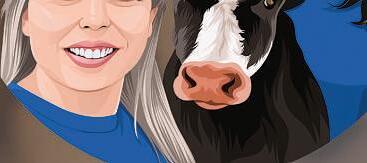

HortNZ boss Nadine Tunley says policies that protect productive land are essential to ensure the steady supply of fruit and vegetables.
As autumn settles in, I’ve been reflecting on our meetings with growers across the country. Clearly, what is top of mind for New Zealand’s growers aligns with HortNZ's priorities – water, climate change and adaptation, and food security and supply.
Food security and supply has become a global concern, with access to fresh produce being a key aspect in New Zealand. Fresh fruits and vegetables are not only essential for our health and wellbeing but are also a critical part of our economy, and growers are under increasing pressure as the cost of production rises.
The horticulture sector, with approximately 80,000ha dedicated to fruit
Poor council finances mean rates are on the ascent Farmers regularly see it. But often, the reasons for the increases go beyond funding services. While councils should be looking at savings to avert large rate increase burdens on farmers, businesses and households, there are also other areas we need to look at.
An example is New Zealand’s joint and several liability regime. Poor law can have negative economic consequences for productivity. Our joint and several liability regime is wrong, unfair, inequitable, and creates massive inefficiency in the construction industry and for farmers
A common case has been a body corporate suing the developer, architect, engineers, builder, subcontractors and council over a leaky building, where they are said to have caused the same loss by designing, consenting and building a structure negligently.
The same can happen with a farm, cowshed or farmhouse.
In this example, every defendant party is liable for the full amount of the loss, regardless of how substantially or morally responsible any liable party may have been for the ultimate outcome. This is called joint and several liability.

and vegetable production, provides over 40,000 jobs and plays a vital role in our food security.
The Covid-19 pandemic and recent adverse weather events have highlighted the need to ensure a reliable and resilient supply of fresh produce. To achieve this, we must improve growers’ access to land and water HortNZ is advocating for policy and regulatory changes that support growers and protect our domestic food production
We recently urged the Government to consider the impact of changes to the
Freshfruitsandvegetables arenotonlyessentialfor ourhealthandwellbeing butarealsoacriticalpartof oureconomy.
MARTIN DE RUYTER/STUFF
HorticultureNewZealand chiefexecutiveNadine Tunleysaysgrowers needpolicies thatworkfor thesector.
Resource Management Act (RMA) on fruit and vegetable production.
We’re seeking amendments to the proposed reforms to protect highly productive land and enable the supply of fresh produce. It’s crucial to balance the need for housing with the need for food production
Despite a growing population, restrictive council rules and RMA limitations have prevented vegetable growers from expanding their operations. While housing demand has increased, the area for growing vegetables has remained stagnant.
Supporting the supply of fresh produce not only ensures a steady food supply but also promotes healthier living and sustainable farming practices. With growing pressures from population growth and climate change, it’s essential to recognise the importance of food security and work towards achieving a reliable supply of fresh and healthy food for all New Zealanders.

The horticulture sector plays a crucial role in New Zealand’s food security. It provides jobs, contributes the economy, and ensures access to fresh and healthy food.
If the RMA changes do not prioritise food supply, it could worsen our food security, and increase the cost of living for New Zealanders.
To maintain and enhance this role, we must prioritise policies that support growers, protect productive land, and enable the supply of fresh produce. By doing so, we can ensure a resilient food system that meets the needs of our growing population while safeguarding our environment for future generations. ■
Economist Gordon Stuart looks at the pitfalls of building and the costs involved.

But often, a number of the defendants will be unable to pay a judgment, leaving those most solvent (and often the least morally responsible) carrying the full burden of the judgment
In other words, we as ratepayers of the councils end up providing Building Defect Insurance as the last man standing whilst the rogues slip off into the sunset.
What this means for liability is that councils become the underwriters of construction companies’, subcontractors’ and advisers’ negligence – or, to put it another way, the ratepayers/farmers are made the unpaid guarantors of construction quality.
Professional advisers and their insurers become the guarantors of other parties’ conduct over which they have no influence
Victoria and New South Wales in Australia, and various states in the United

States, have introduced reforms to spread the burden more evenly, so the plaintiff went with the cheapest bid, which was millions below the other two tendered bids, they bear some of the insolvency risk.
No system of liability apportionment is perfect But it can be fairly said that joint and several liability leads to serious unfairness and imposes an unreasonable economic burden on responsible “deep pocket”defendants.
The public attitude is that “deep pockets” (think councils and insurance companies) suffer no real harm in having to meet the full liability
This ignores the obvious – that such losses are always ultimately borne by the community and farmers, via increased rates and insurance bills.
It is particularly obvious in the case of councils and other building consenting authorities, but it is also true of defendants. The effect of loading the risk of other defendants’ insolvency on to such parties as engineers is, at a minimum, to increase the cost of insurance, which in turn is passed on to the community or farm in higher chargeout rates.
For the insurance company, they are required to reserve the full amount of a valid-looking claim, regardless of how many defendants caused the loss. In Australia, the reserve need not be as high, because an insurer can responsibly assume that it will only be liable in proportion to its fault in causing the loss.
The additional reserve is a cost to the New Zealand insurer, which is then passed on in premiums or, worse, still reduces insurance choice, as foreign insurers required to hold high levels of capital leave the New Zealand market.
Housing and building costs have become unaffordable for the next generation, and the time to house completion from original land purchase, via resource consent to building consent to actually building, has become ridiculous. Houses used to be circa 4x salary, are now circa 10x, and heading to 14x.
Fear of payouts for things like leaky buildings means council liability is now a massive handbrake on productivity, and creates a terrible culture. Getting things consented and built, like a dam, a house or a cowshed, is a now a nightmare.
One of my proven building customers recently had 26 building inspections
Fear of payouts for things like leaky buildings means council liability is now a massive handbrake on productivity and getting things like a dam, a house or a cowshed consented and built
of one house. Another has had six inspections of a farm shed. Likewise, when an experienced concrete contractor pours footings that have been designed by an engineer who signs them off, because of the liability on council, the building inspector, who often has no clue, also signs them off The liability should sit with the concrete contractor and the engineer, not the council. House builders are now regularly having to wait for inspections –instead of completing three buildings with one crew in one year, they can often do only one or two.
In essence, the liability law hurts society by creating unnecessary bureaucracy, red tape that strangles business and farmers, and agencies working at cross-purposes, with duplication of work. Bureaucracies produce organisations with toxic politics, authoritarian hierarchy, and suffocating rules. These organisations are usually less creative, highly risk-averse, and exceedingly innovation-phobic. They hate accountability.
Our joint and several liability laws need changing. ■
















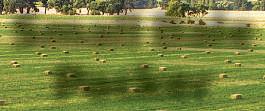
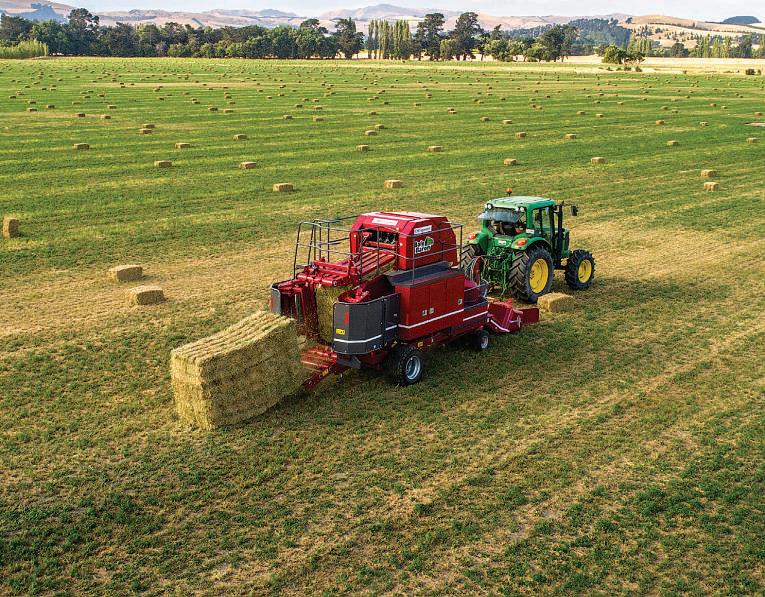

Many in the agricultural industry understand the need to protect migrant workers, but it isn’t as simple as that.
By Louisa Steyl.Some farmers may not be able to hire staff in time for the calving season after sweeping immigration changes.
“It’s a tough subject for us at the moment,” Aquila Sustainable Farming compliance leader Jason Craig said.
“It feels like a big step backwards.”
Immigration Minister Erica Stanford introduced the changes from April 7 in response to a review of the Accredited Employer Work Visa (AEWV)
The review found that the scheme, introduced to address post-Covid work shortages, was exposed to an increased risk of exploitation by “unscrupulous” agents or employers between July 2022 and June 2023.
The AEWV replaced the traditional Essential Skills Visa, with the idea that the work visa application process could be sped up if employers were already vetted by Immigration New Zealand.
While many in the agriculture industry say they understand the need to protect migrant workers from exploitation, they don’t think a “one size fits all” approach is the way to go.
Under the new policy, employers now have to advertise low-skilled positions for 21 days as opposed to 14, list lowskilled positions with Work and Income, and explain why no suitable New Zealanders were available for the job.
Unless they will be paid at least twice the median wage, visa applicants must have three years’ relevant work
experience as well as a relevant level 4 qualification recognised by the New Zealand Qualifications Authority or a bachelor’s degree.
Where low-skilled workers could previously be approved for a five-year visa, they can now only get a two-year visa, with potential for a third year before a stand-down period.
“It’s just so difficult to find people as it is,” Craig said.
Aquila recently posted a job advertisement on the Farm Source website; of the 120 applications received, only five were from people already in New Zealand and none were Kiwis.
Fortunately, one of the applicants was on a residency visa
“We got lucky,” Craig said. The alternative was a six-week to threemonth process to fill a role, with a chance of losing the candidate in the process.
It was “awesome” that Immigration NZ was curbing migrant exploitation, he said, but a short-staffed farm put the wellbeing of workers and livestock at risk.
The three Aquila staff members on work visas remain nervous about what their future holds, he said.
“You feel for the guys because they’ve come to set up a life here. They’ve put their eggs in one basket.”
The shorter visa also made it difficult for employers to invest in workers, knowing they would possibly lose them in two years.
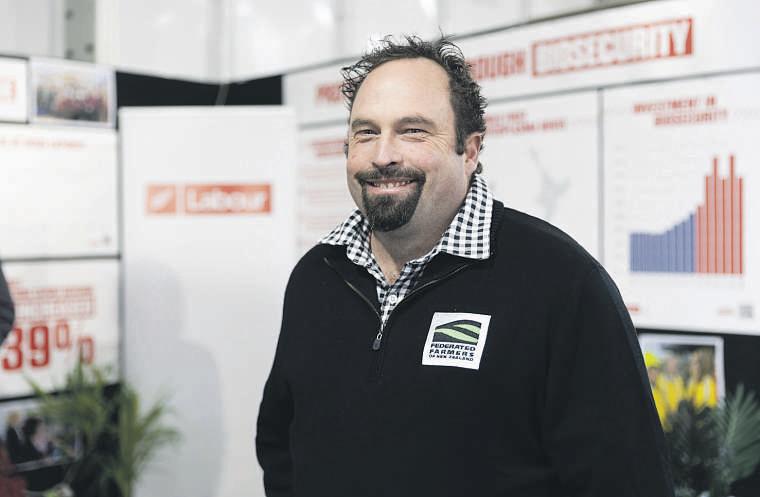
They would be charged international student fees for Primary ITO training to meet qualification requirements, which came with a price tag of $16,000, Craig pointed out.
In addition, the median wage requirements have pushed salary expectations up across the board, and hiring has become a bit of an auction with other employers, he said.
“A big risk that I see is that exploitation will continue to rise as people just cannot afford to go through the full process and pay staff such high salaries.
“Unfortunately the bad eggs out there
will continue to flout the rules, and the new legislation could in turn increase the number of employers who resort to this.”
Federated Farmers dairy chairperson and immigration spokesman Richard McIntyre has met with the minister to explain the repercussions of the visa changes for the farming community.
The two agreed to look at ways to roll the policy out so it would not negatively affect the agriculture sector.
Referring to Stanford’s efforts to curb the exploitation of workers, McIntyre said: “We recognise the challenges she has, but we don’t have




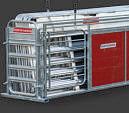
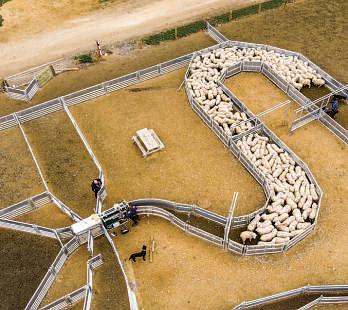
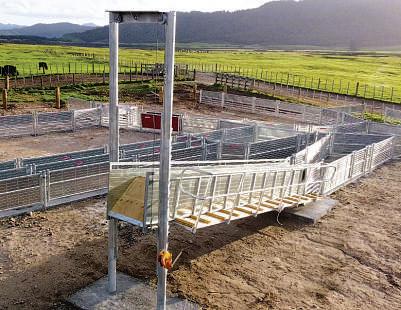




“


And some farmers were concerned about being able to hire workers by the season.
“[Applyingfora workvisa]isn’ta simpleprocess,and youcanunderstand why,butitshould besimpleenough thatpeoplecan engagewithit.”

Richard McIntyre
that problem in rural New Zealand.”
The immediacy of the changes meant there would be some people in the process of applying for a work visa for whom the goal posts had moved, he said.
Ideally, workers should start on June 1 so they could be inducted before the calving season, but any hiccup with forms or wording would delay the visa process.
“[Applying for a work visa] isn’t a simple process, and you can understand why, but it should be simple enough that people can engage with it,” McIntyre said.
New Zealand’s flip-flop on immigration policy meant the country was no longer a preferred option for migrant workers, he said.
“We act like we’re the only place migrants would want to be with our immigration policy. We need a consistent policy with forward planning built into it.”
A spokesperson for Stanford’s office said the minister has met with Federated Farmers representatives and has asked the Ministry of Business, Innovation and Employment and Immigration NZ to work closely with the farmer lobby group on its concerns. ■





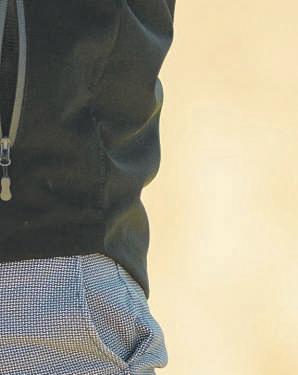
Dose alldogswithPraziquantelatleast 48 hoursbeforevisitingthe Maimai, to preventsheep measles.


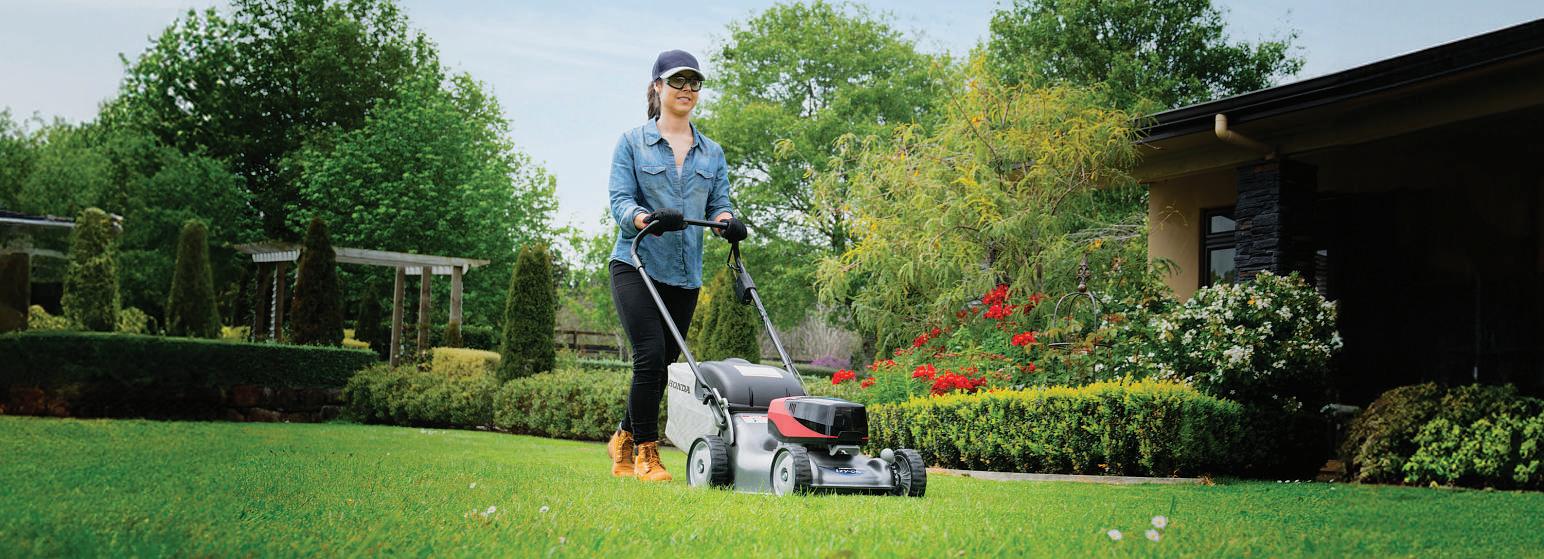





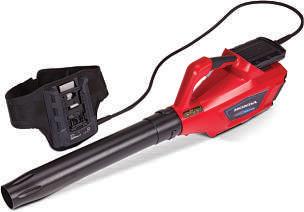
With cordless battery technology,uncompromising cutting performance and arobust build quality,they’re aclear-cut favourite for abetter-looking lawn. It hasa powdercoated steel deck, 42 litre catcher and powerful brush-less motor.
TOOL +4Ah BATTERY +CHARGER
The Honda HRG466 self-propelled mowerisengineered with practicality and durability front of mind. Made from quality components, it’sequipped with all you need with quiet, clean and powerful performance including selectivemulching and a50litre catcher
TOOL +6Ah BATTERY+CHARGER
Honda’s HHH36 Battery Hedge Trimmer is idealfor both the residential and commercial user.Itdelivers optimum performance viaits brush-less motor,leaving aperfect finish from Swiss steelblades that effortlessly slice through bushes,plants and hedges.
TOOL +4Ah BATTERY+CHARGER
Honda’s HHT36 Battery Bull Handle Brush Cutter is perfect for slashing through large areas of tough scrub with the performance that professionals need. Itsbattery powered brush-less motor gets through the job with ease,offering sustained high power and efficiency.
TOOL+6Ah BATTERY+CHARGER
A battery powered blower with strong performance, uniquebattery holder belt and two nozzles to make light work of all the blowing and tidying around the yard or on the job
TOOL +6Ah BATTERY+CHARGER


Amendments to the controversial Resource Management Act have pleased farmers, but opposition leaders say the changes are short-sighted.
By Louisa Steyl.


Farmers have welcomed changes to the Resource Management Act, but opposition leaders have called them “environmental mismanagement”.
Recently, the Government announced the first RMA Amendment Bill with the intention of reducing the regulatory burden on councils and consent applicants.
Among the changes are amendments to stock exclusion regulations, a repeal of intensive winter grazing regulations, a three-year suspension on identifying new Significant Natural Areas, streamlining of mining consent processes and changes to consenting requirements under the National Policy Statement for Freshwater Management.
Federated Farmers freshwater spokesperson Colin Hurst called it “the end of the war on farming”.
“These impractical rules have been a complete nightmare since the day they were introduced and farmers will be pleased to see the back of them,” he said
“Farmers are always looking to improve environmental outcomes on their properties and to care for the land, but regulation needs to be practical, pragmatic and affordable.”
The regulations had been amended multiple times in the past three years, confusing farmers and undermining their
confidence to invest, Hurst said.
Farmers were New Zealand’s leading conservationists, he said, and should be empowered to improve practices instead of being tied up in “needless red tape”.
This is a sentiment Southern Wood Council chairperson Grant Dodson agrees with.
“We take conservation seriously,” he said, adding that there were some endangered species thriving in areas where forestry occurred, despite being extinct elsewhere.
“These species haven’t survived forestry, they’ve survived because of forestry.”
Dodson, who had been outspoken against the National Policy Statement on Indigenous Biodiversity’s unclear definition of Significant Natural Areas in the past, said pausing the process of designating these areas offered a chance to take this into account when rules were being reset.
“We know we can co-exist with them pretty well and that’s what needs to be acknowledged.”
Agriculture Minister Todd McClay said improving primary sector profitability was key to boosting our largest exporting sector. “Regulations need to be fit for purpose and not place unnecessary costs on farmers and growers.” Farmers have described winter grazing
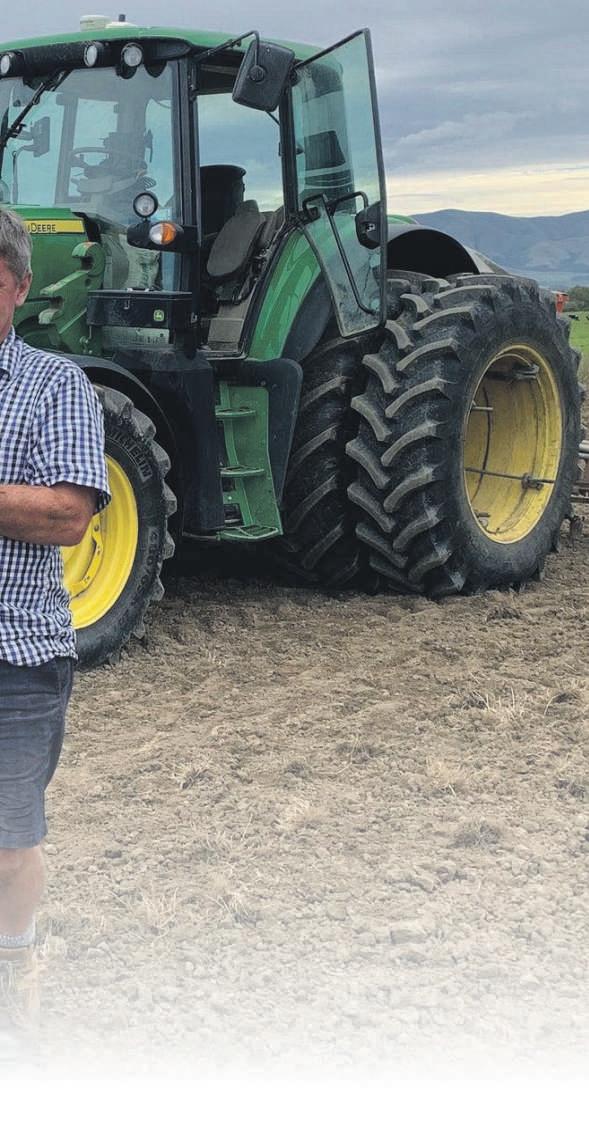
“

These rules have been a complete nightmare since the day they were introduced and farmers will be pleased to see the back of them.
Colin Hurstregulations, in particular, as unworkable, and McClay said focusing on farm-level and regionally suitable solutions would reduce costs for farmers.
“Importantly, effective non-regulatory measures are already in place to support the continued improvement of winter grazing practices going forward,” he said.
“Regional councils tell us there have been significant improvements in winter grazing practices, with farmers changing where they plant fodder crops and how they manage winter grazing.”
But the Labour Party’s environment spokesperson Rachel Brooking said the short-sighted changes would take away
environmental protection in favour of short-term profits.
“These changes are being pushed through fast to avoid public scrutiny.
“They will water down rules that prevent our rivers from being polluted, and our native species [from] being protected,” she said.
Green Party environment spokesperson Lan Pham called the changes “environmental mismanagement”.
“Winding back freshwater protections will accelerate the demise of one of our most precious natural resources,” she said, adding that 45% of New Zealand’s rivers were unsuitable for swimming because of Campylobacter infection risk.
It was estimated that only 10% of New Zealand’s historic wetlands remained while 68% of indigenous freshwater birds were threatened with extinction or at risk of becoming threatened as of 2021, Pham said.
The Resource Management Amendment Bill (RM Bill 1) is expected to be introduced to Parliament this month and passed into law later this year. ■
The Supernatural Wine Company creates wine from organic grapes picked by hand, but there’s a lot more to the process.
By Eve Hyslop.Wild or indigenous yeasts, barrels of hand-picked and feet-stomped grapes, a minimal amount of sulphur and no pesticides or herbicides
A bit of this and a bit of that combined together and you’ll find yourself with a natural, organic or low intervention wine.
The term ‘natural’ wine is widely used, but also widely contested by winemakers, growers, masters of wine, and distributors.
Master of Wine Michael Henley says the term ‘natural’ is contentious because most wine is generally natural. Instead, ‘natural’ refers to the process in which the wine is made and by the lack of intervention used.
Owner of The Supernatural Wine Co, Gregory Collinge, says natural wine is a movement or winemaking process, rather than a certified approach.
“It’s trying to keep intervention to an absolute minimum,” Collinge says.
While some of his favourite wines are conventional, Collinge wanted to explore a more natural approach to his wine making.
“It’s things like hand-harvesting grapes, minimising machinery in the vineyard, using only wild yeasts or indigenous yeasts to kick-start fermentation, rather than formulated yeast.”
The company’s wine is made from Collinge’s home-block vineyard, Millar Road, Hawke’s Bay, which also has luxury accommodation on the property, overlooking the vineyard and seaside
The vineyard has been organically farmed since 2010, certified in 2015. It has also begun integrating a few of Rudolf Steiner’s biodynamic principles with a main focus on soil health to feed the vines and build natural immunity.
Some of the Steiner principles that the vineyard follows include planting wildflowers and mustard seeds to encourage natural nitrogen fixing, adding biodynamic preparations to their soil, following the lunar cycle and purifying the water and vineyard treatments by swirling it into a helix.
So what is ‘natural’ wine? It is wine that has had little intervention in the making process, made from grapes that haven’t been sprayed by pesticides or herbicides. The grapes are often handpicked, rather than by machine, which are then fermented with wild yeasts from the vineyard.
Some natural winemakers will crush their grapes by foot, following a process called pied de cuve. In the process, the wine is fermented with wild yeasts from the vineyards and, unless necessary, extra sulphur or preservatives won’t be added, unlike most conventional wines.
Pied de cuve roughly translates to foot of tank, in relation to a smaller batch of the wine’s grapes being stomped on by foot in a vessel before pressing the larger batch of grapes at the winery




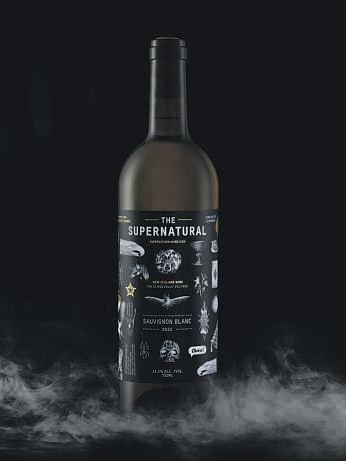
TheSupernaturalSauvignonBlancisoneof manywinesproducedbythecompany.
Collinge’s company, The Supernatural Wine Co, has followed the pied de cuve process for its sauvignon blanc, called The Supernatural.
Rather than a new oak barrel used by conventional winemakers, the company’s wine is made in a 100% stainless steel vessel. This stops the intervention of non-natural flavours like new oak, allowing the flavours of the vineyard’s grapes to do their own justice.
To follow the pied de cuve formula, a small amount of grapes are picked a couple of weeks before harvest, foot stomped and left in the vineyard to start fermenting using the vineyard’s indigenous yeasts
With Collinge’s wine The Supernatural, grapes are harvested and then left to soak on their skins at the winery before pressing them to tank.
After alcoholic fermentation, the heavy lees are removed and the wine is left for 10 to 12 months, stirred once a month to integrate the smaller lees, building texture.

Often new oak is used in wine making, which introduces additional flavours. However, in natural wine making, old oak barrels or neutral vessels are often used Rather than oakiness, the old oak helps build texture in the wine.


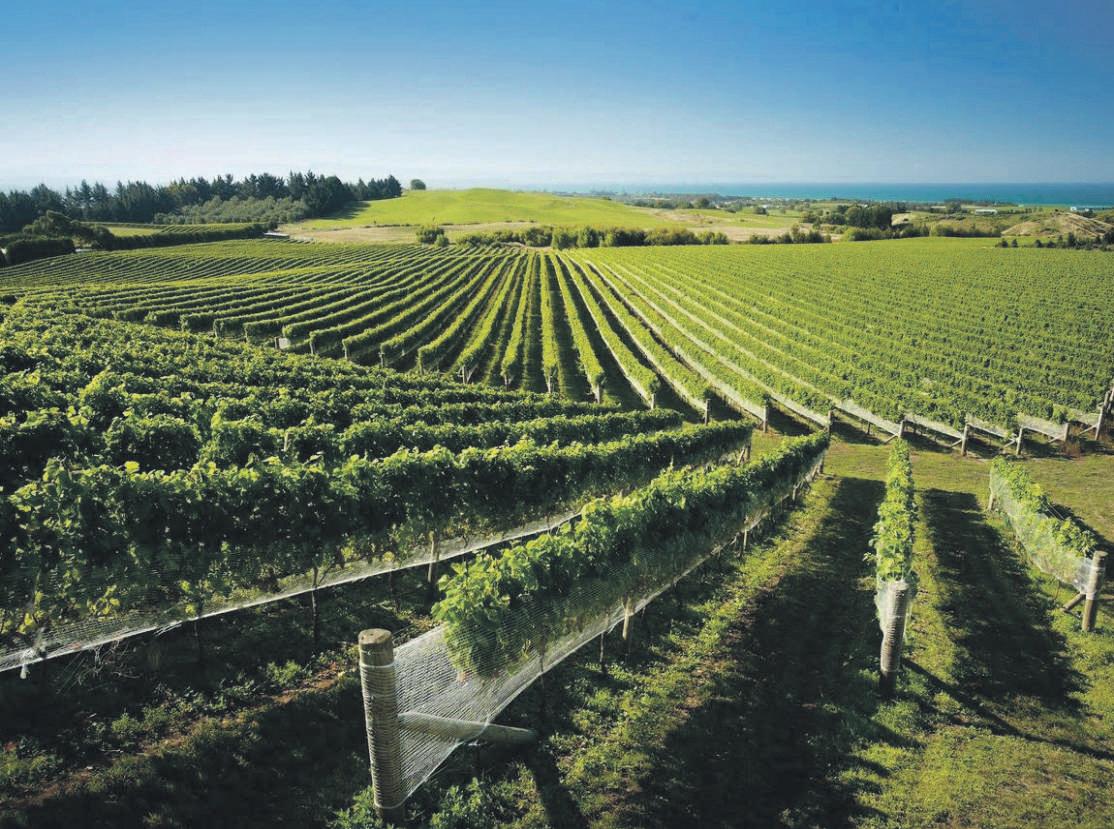

Lees are the dead yeast cells left over after fermentation.
The wine then naturally goes through malolactic fermentation which softens the acidity and also adds creaminess.
“I try to do that on the new moon because the theory is that there’s less of a tidal pull on the wine at the new moon. We hopefully release less aromas out of that stirring process.”
The wine is then not sterile, but coarsely filtered and bottled to remove larger solids.
Henley says that wines with low intervention won’t have any synthetic additives such as pesticides on the grapes or preservatives in the wine itself. Two natural additives, copper and sulphur, may be added to low intervention wine as a preservative.
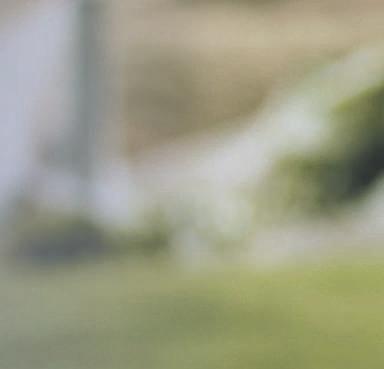

Collinge says a small number of natural winemakers won’t use any sulphur at all, but most do.
“They do tend to have a bit more of a wild taste about them... I feel like they’re almost living in the bottle because they have minimal treatment or sulphur,” Collinge says. ■


























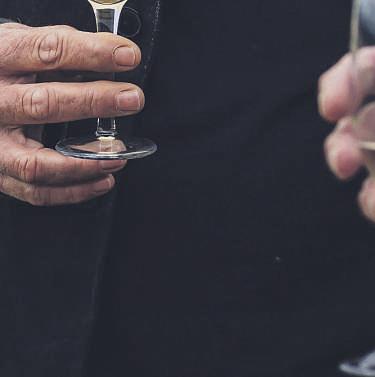
Main: Gregory Collinge, left, is the owner of The Supernatural Wine Company and began farming his Millar Road vineyard organically in 2010, supplying grapes for most of the company’s wines SIMON CARTWRIGHT COMMERCIAL






A small-scale grower says the kiwifruit industry has a good future but may have seen its best years.
By Bethwyn LittlerJapanese consumers are tucking into the latest variant of kiwifruit Zespri has developed to improve mood and wellbeing.
Zespri says naturally occurring pigments give the fruit its red colour and research has shown that anthocyanins can contribute to improved mood and wellbeing.
RubyReds have been exported to Japan and the SunGold variant is ready to harvest in what the kiwifruit industry hopes is a better season than the last three.
Zespri chief executive officer Dan Mathieson says the sector is optimistic.
“It’s been a far more settled growing environment compared to the last couple of seasons when growers were facing a number of challenges, including the impact of Covid-19, the significant labour shortage in 2022 and the weather events of 2023.”
Opotiki’s Riverlock Orchard’s Doug Brown does not believe there is a workforce shortage this season.
“Thankfully staffing looks like it is back to normal. Backpackers are back on the scene.”
He says as a result of the staffing shortage over Covid-19 more automated methods were developed in packhouses, which has reduced the number of workers needed.
Small-scale growers Bruce and Shirley Farley have been growing kiwifruit in West Auckland for 48 years. They have 0.43 hectare of RubyRed under plastic and 1.4 ha of SunGold varieties
“We had to downsize our gold because we couldn’t get our workers though Covid-19.”
The Farleys also grow 0.4ha hothouse persimmons under their brand BSWEETNZ, which are destined for markets in Thailand and Vietnam.
“Being under plastic our persimmons are reasonably early and most of our fruit are air freighted. They will be harvested from mid April through to the end of May.”
Last year the weather was horrendous for the Farleys and others growing in the area and the impacts are still being felt.
“It didn’t stop raining The water table is high here and the consequences of the Cyclone Gabrielle combined with the Auckland flooding meant that some kiwifruit plants lost their root systems and have since died.”
Shirley Farley believes the kiwifruit industry still has a good future but feels it has probably had its most prosperous years.
“Wages have risen rapidly, along with
fertiliser, sprays, and packing costs all increasing significantly over recent years. With Global GAP for Zespri and NZ GAP for our packhouse, compliance is becoming more time-consuming and costly.
‘‘Our profit margin is getting smaller.”
“The RubyRed is a delicious fruit. Friends and family love it. It is hard to grow but we believe it has a great future.”
Harvesting contractor Punchbowl’s relationship manager Natalie Grubjesic says because the Farleys’ orchard was early to harvest RubyReds they were able to contribute to filling the first shipment to Japan.
Zespri’s first charter shipment of the season left the Port of Tauranga in March bound for Shanghai. The vessel was carrying 700,000 trays of gold kiwifruit and 15 containers of RubyRed for customers in China.
Mathieson says delivering consistently good quality fruit is the key consideration in the planning process.
“We’re trying to make sure we’re striking the right balance of having a good source of early season fruit to capitalise on early season sales opportunities, and having fruit that stores well so that we can have a consistent flow of fruit through the season and minimise late season quality issues.”
He says the fast-tracked implementation of New Zealand’s Free Trade Agreement (FTA) with the European Union is a significant boost for the kiwifruit industry.
The NZ-EU FTA Legislation Bill will come into force on May 1. About 90% of Zespri’s exports to Europe this season arrive after this.
“We’re incredibly grateful for the efforts of all those who helped to make this agreement happen and who helped get it into place so quickly,” Mathieson says.
“It delivers tariff relief at a time when the industry is resetting after a very challenging period and consumers are also facing rising living costs. In the last two seasons growers have dealt with a significant labour shortage and resulting quality challenges which, coupled with poor growing conditions and rapidly rising costs, has put many under real pressure.” ■

Opinion: The America’s Cup and the hype that surrounds it is overrated and only for the wealthy, writes sports commentator Miles Davis.
‘The America’s Cup is New Zealand’s Cup.”
P J Montgomery’s iconic words in 1995 as Black Magic secured the trophy for the first time. A trophy that had really only come slightly into New Zealand’s collective consciousness in 1987, when KZ7 put up a valiant challenge in Fremantle, suddenly took on a status equivalent to a Rugby World Cup. That status was cemented when Team New Zealand defended the trophy in Auckland five years later. But is it worthy of all the publicity and adulation or is it a minor trinket given an overblown status? I believe it’s the latter.
There are several factors that led to this distortion but most influential of them all was the ridiculous coverage given to it by TV One In 2000 it was given eight to nine hours a day in coverage. Even when there was no racing on.
That saturation convinced many that this event was the most important on the planet. Forget about the fact that the vast majority of the world didn’t even know it existed Even most residents of San Diego in 1995 were unaware the event was on although it was happening in the waters off their city. The reality is that the competition has always been about the wealthy trying to

outdo each other for bragging rights. The flag on the competing yacht is merely a flag of convenience.
Granted, Team NZ did a great marketing job selling it as a team of four million against the world getting everyone to buy red socks at $10 a pop. But the facade was soon lifted when Russell Coutts and Brad Butterworth jumped ship The nation was outraged, labelling both as traitors but the reality was they were professional sailors who were entitled to ply their trade wherever they wanted. The team of four million was a sales pitch nothing more.
Boosted by their success and the hype, the TNZ syndicate became greedy They went to the Government and insisted they needed $7m just to keep the team together for a few months until the next defence They had already dispensed with the hassle of selling socks when the Government gave them $40m ($10m x 4 years but cutting out the middleman).

the Government offered $5m to keep the team together but were told it would take at least $50m. Then after a lot of bleating demanding more money for the 2025 defence, stuck two fingers up to New Zealand and took the event to Barcelona New Zealand’s Cup my backside.
The America’s Cup is not about nation versus nation, it’s about money and wealth generation for those taking part. Government was always keen to give money to the cause, spouting about the revenue it would generate for the country, but the reason was just as likely to be the opportunity to rub shoulders with billionaires on their super yachts.
By all means enjoy the event if that’s your bag but don’t be conned that they are doing it for the good of you and the country. It’s all about them. ■
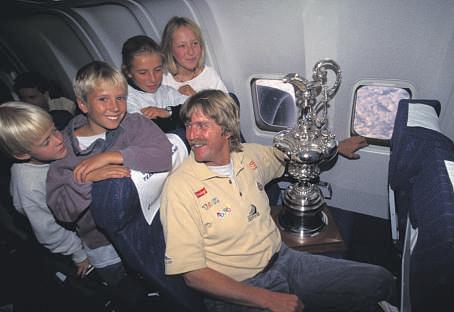

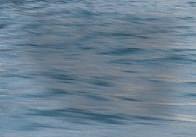
Fast forward to 2021 and Auckland Council and the Government stumped up nearly $250m. After a successful campaign




The local aquaculture sector hopes the Ōpōtiki marina can rewrite headlines for the small town. By
Bethwyn Littler.
Ōpōtiki was once called the homicide capital of New Zealand, but local developers are aiming to hit headlines for aquaculture instead
Instead of front-page stories of homicides, and mayor David Moore last year accusing politicians of using a gang funeral as a political football, an iwi-driven mussel farm is hoping to rewrite the town’s story.
Whakatōhea Mussels chief executive director PeterVitasovich said its vessels were still unloading at Whakatāne and shipping the mussels 40km back to its Ōpōtiki factory because the local marina development was held up after a local hapū appealed the resource consent. However, he is optimistic the marina will be great for the community
“We have three good enabling councils (Ōpōtiki District Whakatāne District and Bay of Plenty Regional), and the Crown has taken a long-term view by supporting the project through the Provincial Growth Fund.”
The mussel farm is located 9km off Ōpōtiki, covering 3800 hectares of ocean space Mussels are harvested and delivered to the Ōpōtiki Processing Facility, a pur-

pose-built factory opened in 2021 producing for the domestic and international markets.
Whakatōhea Mussels has three boats and a team of 187 people, including 24 aquaculturalists
There are three players in the marina project The council is responsible for the sea walls, which are very near completion. Whakatōhea Mussels has the water rights, runs the boats, and owns the processing factory. Ōpōtiki Marina and Industrial Park is developing the marina.
Marina director Chris Peterson said the infrastructure would include safe berths for the aquaculture industry fleet, leisure and charter craft.
“Wharf and industrial loading facilities will be built, as well as haulout facilities, which will allow the development of boat maintenance industries.”
Peterson said a 6ha area would be dug out to provide a marina water space immediate-
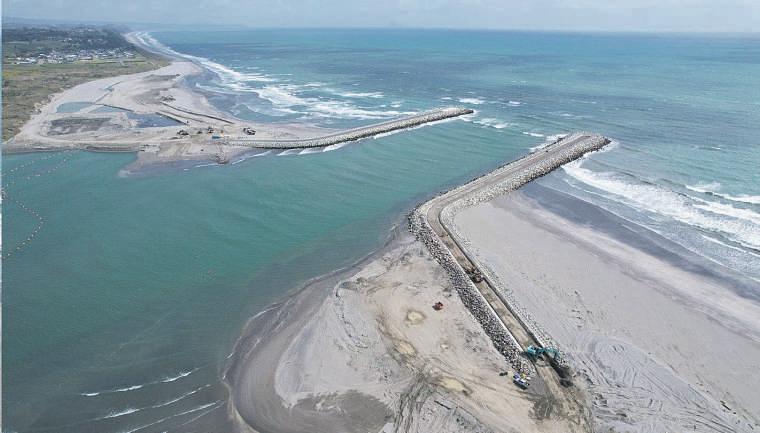
A rendering of stages one to three of the Ōpōtiki Marina and Industrial Park development, looking over the
and

ly adjacent to the deep river channel, and a short distance to the harbour breakwaters and entrance. The entrance is operational now, and provides all-weather and all-tide access to the Ōpōtiki Harbour.
Peterson said the consent, granted in June of 2023, was appealed by a hapū group. The
marina and hapū are now in consultation. Once the go-ahead is given, Peterson said stage one could be completed in 12 months. The mussel boats will continue to unload in Whakatāne while Ōpōtiki’s small town wharf is upgraded. Work on the wharf is due to be completed by the end of July. ■

Using drones to spray weeds can be more efficient and cost effective in many situations. From our experiences, we have identified the following pros and cons for aerial spraying with drones.
Pros
■ Application on target: The drone excels in pushing chemicals down into the canopy. Its application method combined with proximity to rotor wash acts as a vortex, and effectively delivers chemicals to the target area.
■ Small scale efficiency: For areas smaller than 10 hectares, a drone is easy to work with and cheaper than hiring a helicopter. As the scale increases, the choice between drone and helicopter depends on the treatment area’s characteristics. A drone might be beneficial for small intricate areas with good access, while a helicopter will be more efficient for broadcast spraying, or blocks with long ferry distances.
■ Lowerwaterrate: The drone requires a lower water rate, ranging from 60l/ ha to 80l/ha for comprehensive weed coverage. This means less water is needed to complete a job, and there's no need to bring in large equipment to the site.
■ Adjustabilityon the fly: You can constantly adjust buffers, water rates, flight height, and droplet size on the fly to suit the shapefile, ensuring a guaranteed coverage of a block.
■ Quieteroperations: Drones are quieter, and large livestock tends to be calmer around them. They can be programmed
to handle sensitive boundaries before a helicopter boom spray.
Cons
■ Ferrytimes and distance: The time and distance required for ferrying can affect application efficiency. At certain distances and climbing altitudes, the drone may spend more battery flying to the treatment area than applying chemicals. Leading to using half loads and doubling potential flying time. This can be addressed with multiple take-off locations, but its trade-off is the movement and shifting the mixing and water set up.
■ Limitations of applications and technology: It's harder to be flexible with a drone compared to a helicopter pilot. The drone follows a set route and cannot be adjusted mid-flight, aiming to be most efficient with its battery usage, this caused the pilot to have to work around the drones programming system to be specific on start and finish points along the flight path. When due to a change in wind direction, if there is a need pull off a boundary and push to the other side of the block, the pilot has to cancel the flight, land the drone, and then take off again. Adding or subtracting additional areas can be challenging and require a tools down period.
■ Largerweatherwindowrequired: Due to the slower application of chemical on to the target area a larger weather window is required to have a successful spray day. ■
Scott Downs is director of sales and marketing for PF Olsen.
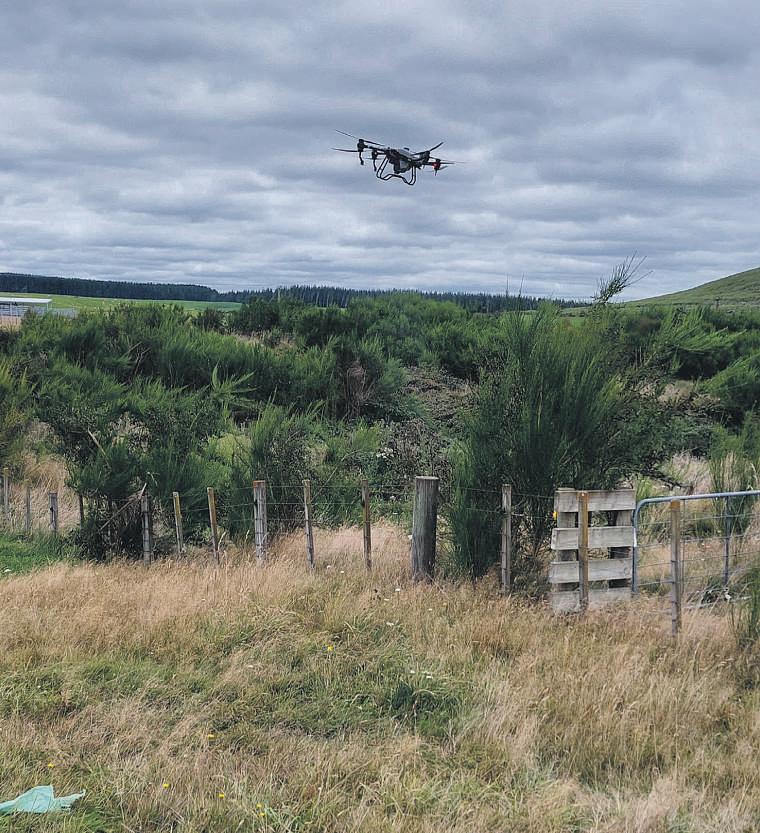

With the landscape of farming constantly evolving, farmers are often faced with the question:
“How can we make operations more productive and profitable on the farm?”
This inspired the farmers, designers, owners and directors of Combi Clamp Limited – Wayne and Lynley Coffey – to develop the Combi Clamp Sheep Handler and a range of Heavy-Duty Cattle Crushes
Built with superior strength and durability, the Combi Clamp Sheep Handler and Heavy-Duty Cattle Crushes promote less stress on farmers and their stock. Wayne and Lynley have kept the health and wellbeing of both farmer and animal in the forefront of their design
“The most common feedback we get from our customers is ‘I wish I had bought one sooner!’, followed closely by ‘I don’t want to end up like my old man, all bent and broken’,” the couple say.
The Combi Clamp sheep handler is manually operated using the operator's body weight to catch sheep.
The manual operation significantly reduces the physical demands of working with sheep and increases the precision of a wide variety of animal health treatments such as vaccinating, drenching, dagging, weighing and capsuling
One of the main questions Wayne recalls getting from interested clients is: “Does this handler tip sheep over to access the feet?” His answer is a resounding: “No.”
In designing the Combi Clamp, Wayne
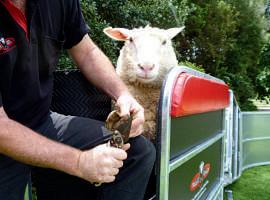


and Lynley recognised that the tipping method, utilised by many historic sheep handlers, would often only work for a year or two before the sheep became shy of them.
With the Combi Clamp, feet can be trimmed by supporting one foot, leaving the other three on the ground. This keeps the animal settled and prevents the risk of being kicked in a typical roll-over system.
This less invasive approach of keeping sheep on their feet, means the animals are still running through 15-year-old handlers without hesitation. “We believe that you can’t put a price on this kind of confidence and reliability,” Wayne and Lynley say.
Combi Clamp’s range of Heavy-Duty Cattle Crushes have the same principles of simplicity, safety and efficiency. All Cattle Crushes are loaded with features that enhance their safety and effective operations.
There are both vet and vetless models with parallel squeeze option, all featuring Combi Clamp’s one-of-a-kind Auto Head Yoke, which can also be purchased on its own.
You can’t beat the confidence that the automatic catch and reset of this head bail gives you, especially when working alone.
A significant amount of effort has been put into reducing rattling noise, making the crush pleasant to use and keeping cattle calm and relaxed. ■
For further information, call 0800 227 228 or go to www.combiclamp.co.nz.

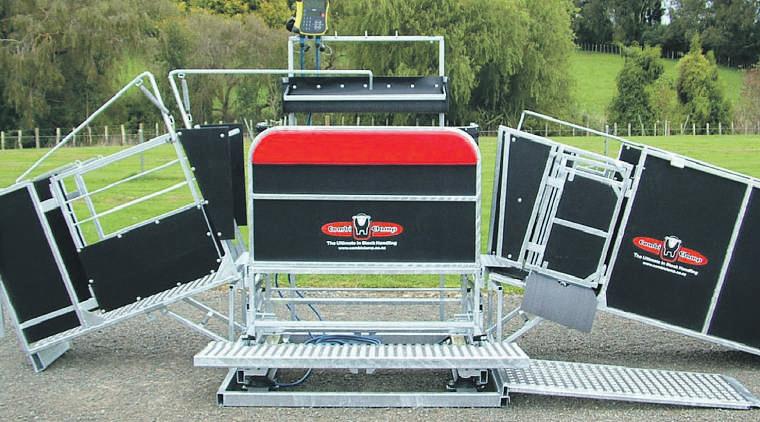

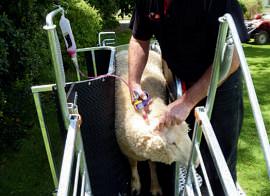
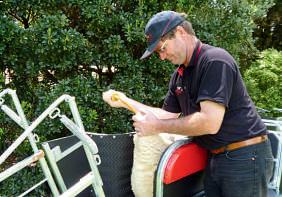








On June 1, thousands of sharemilkers will pack up and move onto greener pastures with their cows for their annual migration.
Sharemilking is a distinctly Kiwi form of farming and one that is common across New Zealand. But is sharemilking right for you, and what do you need to know before entering a sharemilking contract?
We spoke to Peninsula Employsure’s advice team to find out.
What are the different types of sharemilking?
There are three types of sharemilking: a Herd Owning Sharemilker Agreement; a Variable Order Sharemilker Agreement; or a Contract Milker Agreement.
Herd-owning sharemilker agreement
In a Herd Owning Sharemilker Agreement, also known as a 50:50 Sharemilker Agreement, the farm owner provides the land and buildings that a sharemilker needs to care for and milk their cows. They also pay for repairs to infrastructure and the maintenance of pastures, such as fences or fertilisers.
Other expenses that fall to the farm owner in a Herd Owning Sharemilker Agreement are leases, rates, insurance, and any capital costs. However, the herd and equipment
think vehicles like tractors or bikes –are owned by the sharemilker, who is responsible for day-to-day farm operations and costs
A sharemilker in a Herd Owning Sharemilker Agreement breeds the cattle, supplies feed and fuel, and employs, manages, and pays workers.
As the name suggests, 50:50 Sharemilker Agreements typically split the income from the milk equally between farm owners and sharemilkers.
Variable sharemilker agreement
In a Variable or Lower Order Sharemilker Agreement, a sharemilker will only supply some, or none, of the cows. While they still provide labour and maybe equipment, as well as paying for some expenses such as electricity the farm owner takes on more responsibilities.
The share of milk income that a farm owner is entitled to under a Variable Order Sharemilker Agreement is therefore higher than what the sharemilker will receive. However, the final split is determined according to the costs and resources provided by the farm owner to the sharemilker
Contract milker agreement
A Contract Milker Agreement shares similarities with a Variable Order Sharemilker Agreement in that the sharemilker pays a certain percentage of the farm costs and doesn’t own the herd. But instead, they receive a set price per kilogram of milk solids produced.
What traits make fora good sharemilker? Like all dairy farmers, sharemilkers work
The team at Employsure take a look at sharemilking which can be a big step for farmers so both parties need to be clear on their responsibilities.
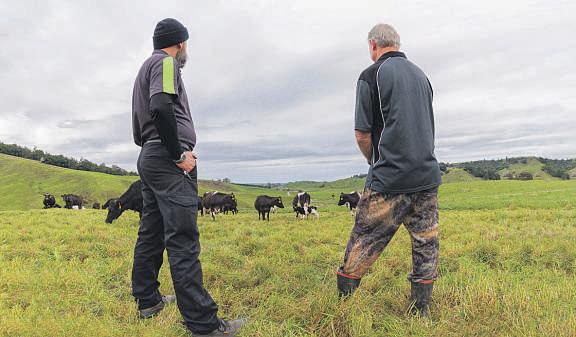
long hours, usually starting before dawn and finishing in the late afternoon nearly every day of the week in all weather conditions. It’s not a job for everyone, and requires a high level of dedication, and perseverance.
In addition to being hard-working and committed, excellent management skills and a responsible mindset are crucial.
A good sharemilker will also be practical, level-headed, able to work under pressure and handle stress if things don’t go to plan.
In what situations would entering a sharemilking agreement offerthe greatest business benefit?
Sharemilking is a way for people who don’t own land to participate in the dairy farming industry. It’s an avenue for them to save up money to eventually buy their own farm, if that’s their goal, or to be a dairy farmer

Sharemilking optionsinclude 50:50wherethe sharemilkerowns andsuppliesthe herdandshares somecostswiththe farmowner
without the added responsibility of property ownership and management. In this case, they can channel investment into their animals and equipment.
For farm owners who have retired from the day-to-day operations of dairy farming, it allows them to continue earning money from their property and machinery.
Ultimately, the goal of sharemilking is to split the responsibilities, costs, and risks of dairy farming.
Sharemilking contracts with well-defined obligations, responsibilities and terms and conditions ensure there is clarity and mutual understanding around the relationship for both parties involved, allowing it to run as smoothly and successfully as possible.
Before entering a sharemilking arrangement, seek expert advice to confirm it’s the right choice for you. ■
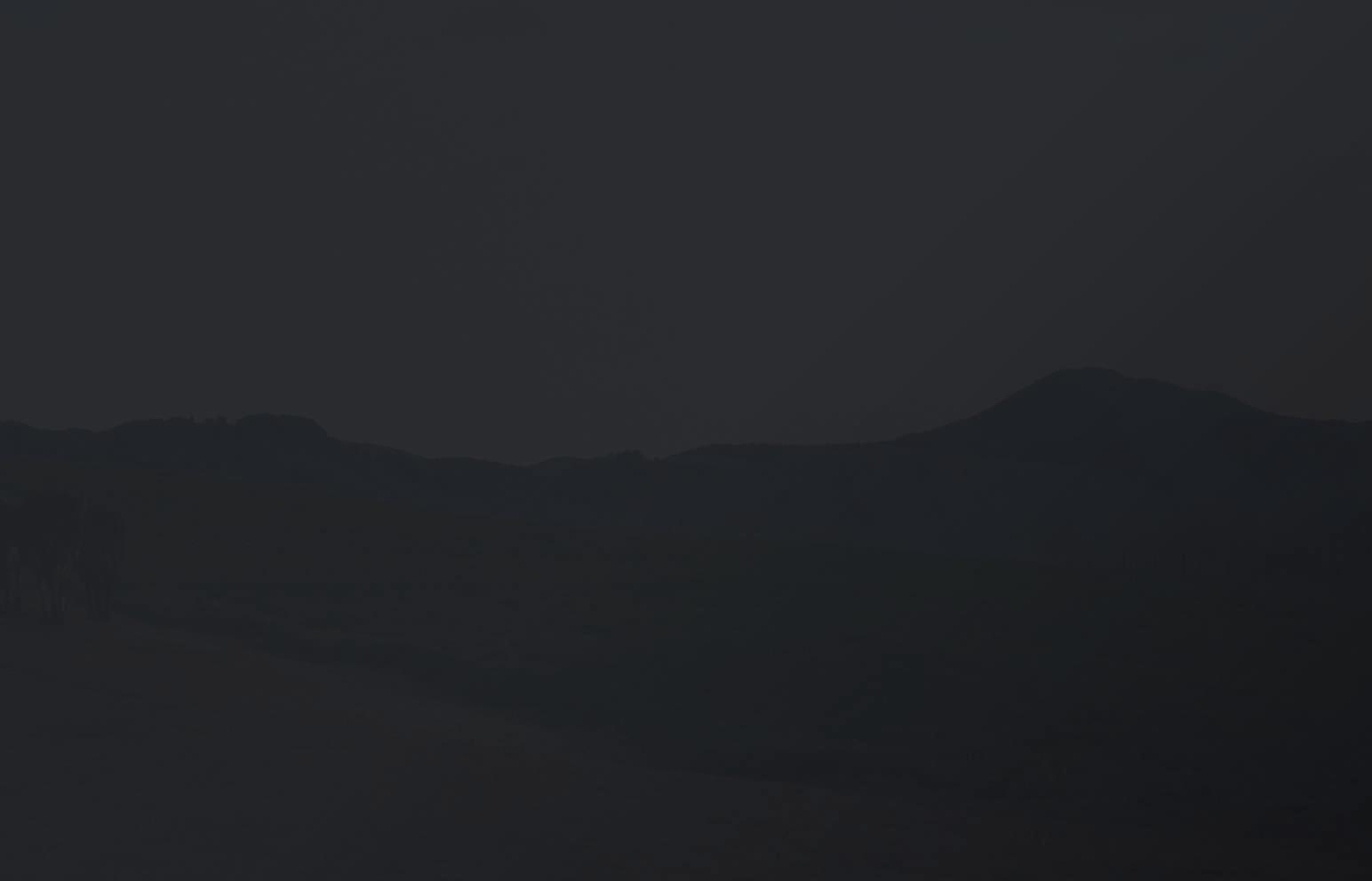


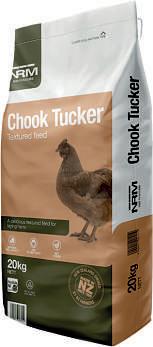


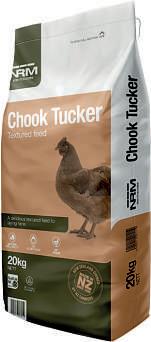




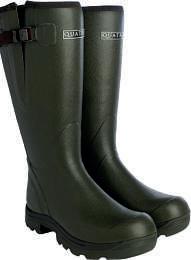




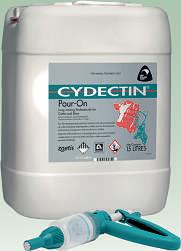
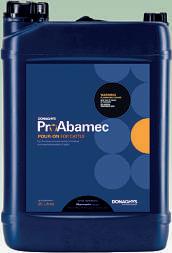






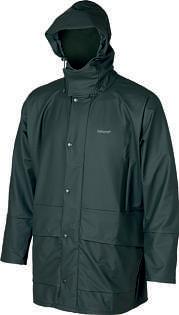




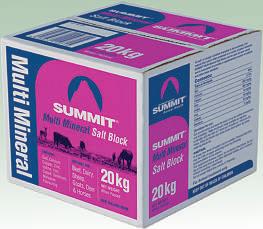

















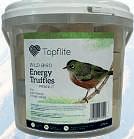













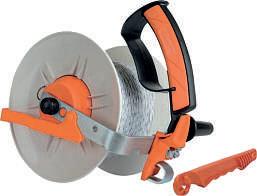









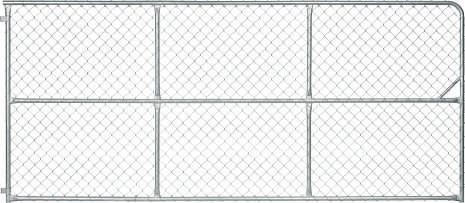















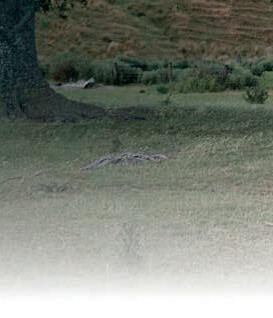

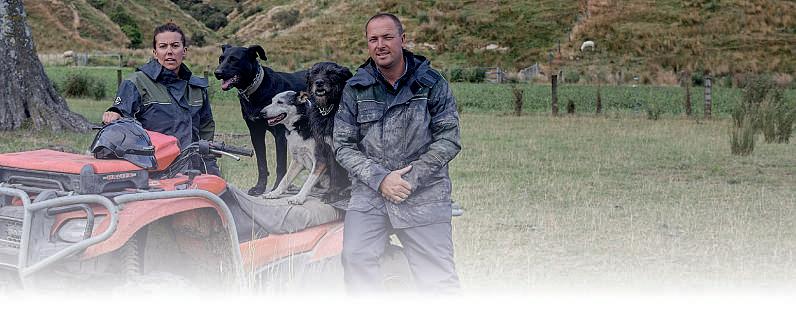






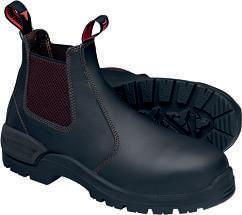








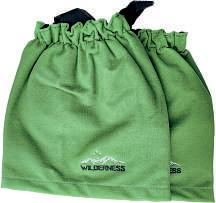





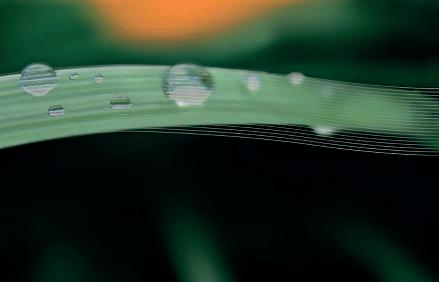




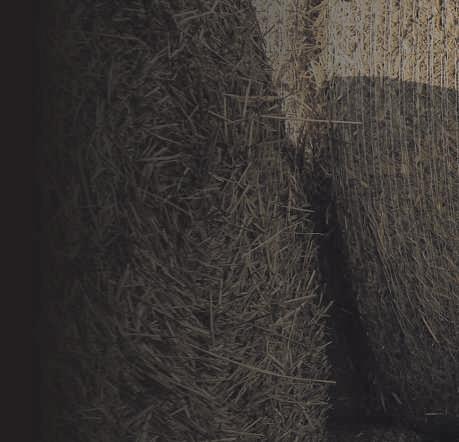
After the ‘park’ gear failed in the unmanned vehicle, the worker had to jump out of the way. It rolled for more than a kilometre.
Anear-miss by a North Island farm worker when their tractor’s ‘park’ gear failed has been shared as the latest safety alert from Safer Farms.
The employee at the East Coast farm had to jump out of the way as the unmanned vehicle rolled towards him. It then continued to roll through the farm for 1.2 kilometres before it was finally halted by trees.
The farm worker was feeding silage to stock and parked the tractor in a gateway, engaging it in ‘park’ gear as he went to open the gate. The gear failed and the vehicle started rolling.
Potential causes for the incident included wear and tear on the ‘park’ gear from operators ‘throwing’ the tractor into ‘park’, rather than coming to a complete stop first.
A further factor could be not using back-up methods, such as lowering the front forks/hydraulics to the ground before getting out of the cab.
While emergency brakes can also be engaged in conjunction with the transmission park gate, this can cause issues as operators can drive off with the brake on and strain the brake function
always be used, even if the ground seems relatively flat.
Lindy Nelson, chairperson of Safer Farms and a Farm Without Harm ambassador, says the Safety Alerts are based on real-life documented incidents and provide key lessons for farmers.
“Safety Alerts are about us sharing and learning from one another It’s a new approach to reducing harm.
“We’re encouraging farmers to discuss the safety alerts with their teams and ask if these incidents could happen on their farm.

It is recommended that operators engage ‘park’ only when the tractor has fully stopped. The ‘park’ lock and ‘park’ brake should both be applied when parked or operating from a static position
Users should also double check for movement or instability – even when the ‘park’ gear/brake is engaged – before leaving the cab. A backup method should

“It’s also a good idea to look at what farmers have in place to prevent such an incident happening.”
The alerts underline the importance of managers providing thorough operator assessment and training.
This includes raising awareness about overloading, including checking the size and weight of loads, ensuring operators know how to counterbalance the tractor effectively, and removing hanger boards from wagons.
To view the safety alerts, please visit farmwithoutharm.org.nz/safety-alerts. Alerts can be printed out for use in training and discussions, and there is an option to be emailed when new safety alerts are added. ■

This article is part of the Safer Farms Farm Without Harm’s safety alert series, lessons from real-life incidents on farms. The series has been developed by the agricultural sector, for the agricultural sector

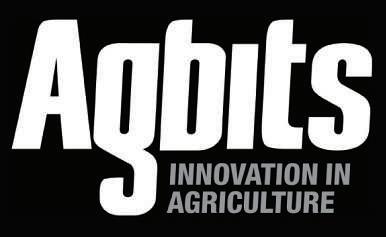




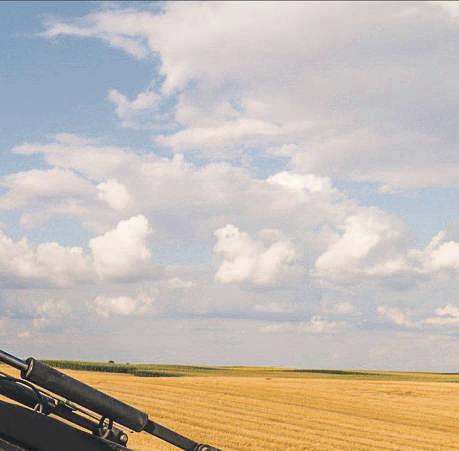
Ensure tractor stability by lowering the front-end loader and engaging the ‘park’ gear and brake when stopping the vehicle.
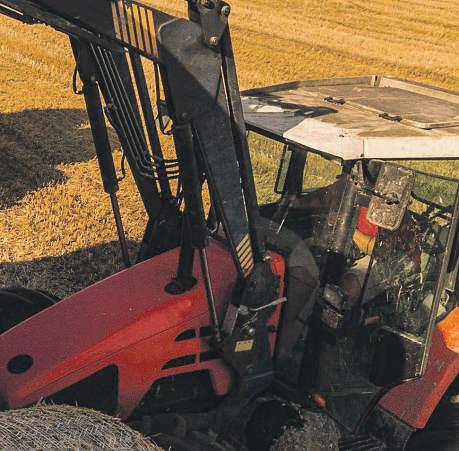







After making the move a few times, sharemilker Sam Ebbett has advice for farmers about how best to prepare.
By Eve Hyslop.Communication is key ahead of this Moving Day, says sharemilker and Federated Farmers (Feds) national sharefarmer chairperson Sam Ebbett
The variable order sharemilker is picking up and moving his operation and belongings this Moving Day, as many other farmers will also be doing.
Ebbett is also the Taranaki dairy chairperson for Feds and currently runs a 330-cow, System 2 operation in Stratford, Taranaki. He’s beginning to prepare already, having dried his cows off in late April, in anticipation of moving 30 minutes down the road to a farm in Inglewood.
He says while the logistical side of it will be “a bit of a headache”, he’s made the move a few times and has learnt that communication on things such as what farm gear you’re bringing makes a world of difference.
“We are working in with the guys on the farm where we are going because we don’t want our gear all mixed up as well. So keeping the communications open both ways makes life a lot easier.”
One example would be communicating the paddock rotations each herd of cows takes. “There’s nothing worse than turning up on the first of June and the cows need

moving but you have no idea where to go.”
Aside from communication, Ebbett says auditing both the farm and house are preparations that can catch people on the back foot, so it’s best to sort this sooner rather than later.
On the farm, Ebbett highly recommends that variable sharemilkers audit the average pasture cover and what supplement feed is on hand, for example. As for the house, he says photos should be taken of how they left their house, as well as how they find their new one.
“Same with if you’re having staff houses

Anational round of forest grower meetings to discuss the proposal for arenewalofthe Forest Levy starts this month. This proposal will be the subject of alevy-payer vote later thisyear.Come along to your local meeting to hear what’s proposed and to have your views heard. See https://fglt.org.nz/ formore details.
on the new farm. Then there’s no ‘he said, she said’ or anything like that. It’s all documented. It is what it is.”
Ebbett says one of the trickiest parts will be transitioning his three children into a new home and school.
“We’ll try to keep them as settled as possible because it’s probably harder on the kids initially than it is on Mum and Dad because of a change in scenery, change in school, change in friends, leaving friends behind, leaving what they know behind.”
Ebbett and his wife Liana’s plan is to send the children to their grandparents for the

first night of moving so that when the kids walk in the door, it’s as close to home as possible.
“We’ve also taken them to the school that they’re moving to a couple of times, so they’re familiar with where they’re going.”
Ebbett says checklist resources from Dairy NZ are available to ease the load for farmers. Tips and advice from the Ministry for Primary Industries and OSPRI are also on their respective websites.
He says the move will likely take two or three days, not including all the packing and organising before Moving Day itself. ■





A Waikato trucking veteran says calm cows with empty bellies make moving day less stressful for everyone. ByBethwyn Littler
.
Moving day is a major event on the dairy calendar.
Once a year, it is the time herd and farm ownership changes hands across the country. Avital part of the move is transporting the herd.
This may involve a quick walk down the road or multiple days in and out of trucks covering hundreds of kilometres
Otorohanga Transport Limited has been moving herds since the familyowned firm began in 1963. They are one of the largest transport groups in the North Island with branches in Kaikohe, Dargaville, Wellsford and Te Kūiti. Managing director Rodney Dow says the company has 35 trucks that can take up to 50 cows each.
In the 1990s, they were regularly moving herds from the top to the bottom of the country. In their biggest year, they transported 30,000 cows.
the South Island to deliver them.”
Dow says there are fewer travelling long distances these days but moving is still an anxious time “It’s hard enough just moving house and shifting kids to new schools. They might have just bought a new farm or a new herd, so the farmers can be pretty stressed.”
A few years ago, he was planning a shift of 500 cows from Whangārei to Te Kūiti. “The farmer’s wife went down a day ahead of us and noticed a lot of roadworks on the motorway. She rang me the next morning to say she had rung the government transport agency.
“She told them ‘we are going to have 500 cows coming down the Auckland motorway so could you make it all clear because I don’t want my cows all held up’. I wondered if the person on the phone thought we were walking the cows down the road.”



He says back in the day, they would regularly take herds from Northland to Southland, which took about four days They had grazing blocks along the way.
“They would stop at Otorohanga for a rest, the next night Spring Creek, Blenheim, from there to Palmerston for the night and then down to the destination farm.
‘‘In those days, we would unload the cows onto the Straitsman ferry, which had cattle pens on top of the deck and then there would be trucks in

Dow says his biggest advice for moving day is to prepare the stock. He says it’s better for the animals to have empty bellies before the trip
One of the biggest complaints the company gets is effluent coming out of the trucks onto the road. “We don’t legally have to have tanks on our trucks, but we do. There are a few effluent stops around the country, but they are not always on our routes.
“Some cows have never been off the farm so they get really nervous and empty their bowels We try to encourage farmers to empty them out or put them on dry feed a day before the move.” ■







Overseas consumers are looking moretowards redmeat as evidence emerges that links red- meat consumption with better physical and mental health.By
Bethwyn LittlerAustralianand United States consumerswould paymore for red meat if it hadproven benefits formood and wellbeing, accordingto arecent survey
AgResearch scientist CarolinaRealini saysthe New Zealand meat industry could use thesefindings to its advantage.
“We know it is difficult times forredmeat industries, especially withthe low pricesfor sheepmeatat themoment. Research like this demonstrates that proven benefits forwellbeingcan be a strong selling point for the producer ” Realini saysAgResearchpartnered with Meat &Livestock Australia to survey attitudes among red-meat eaters in Australia and theUnited States.
“Both countries have astrong red-meat industry. Bothare large importers and exporters of red meat andhaveahigh consumption per capita.”
The study surveyed 1000peoplein the US and 500 in Australia to findout whether proven health benefits would affect consumersbehaviour.
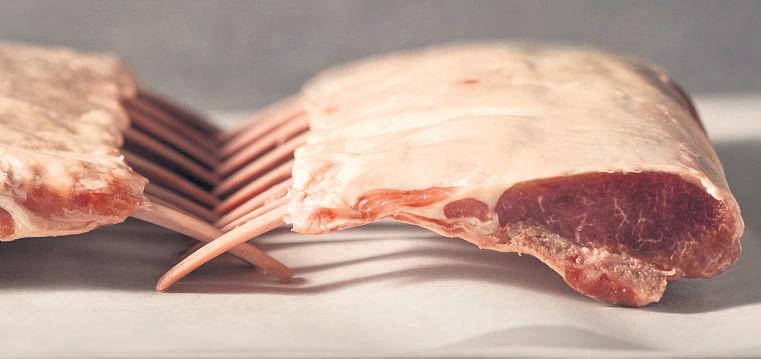
“Weasked if theywould be more interested in purchasing andconsuming meat if they knew it would improve their physical and mental wellbeing.”
American respondentsshowed greater interest in improving cognitive function andmood, whereas Australians emphasisedjoint andgut health.
Respondentswere willing to paymore for red meat if it was shown to improve wellness. ButUSconsumers would pay slightlymore than Australians.
Many Kiwisalready believe in the wellbeingbenefitsofred meat. However, Realinisays research needs to continue into the role of redmeat in maintaining physical andmentalwellness.
Some amino acids in meat wereclosely linkedtomood. “Tyrosine,for example, helps the body produce themoodinfluencing chemical dopamine, which regulatesmotivation,concentration and theability to feel pleasure.
“But we have away to go beforewecan


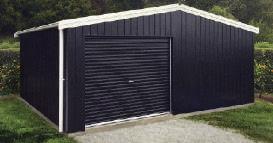


prove aspecific wellness benefit from eating redmeat.The science is notthere yet.”
Realini says although afew studies show apositive link between red-meat consumptionand improved mental health, controversial findings have also been reported
Shesays a2021study found apositive link between redmeat intake and anxiety in Tehrani women, while another study in 2020 indicated the associationbetween redand processed meat intakeand the risk of depression
Julia Sekula,the head of nutritionat Beef +LambNew Zealand, says things are looking promising but agrees more work is needed.
“As mentionedinthis research, further robust scientificevidencetoprove red meat’s positivecontributiontowellnessis required, particularlyinthe New Zealand context
“Recenteating habitsresearch from
the MinistryofHealth tells us that approximately 93%ofNew Zealanders eat red meat at least weekly.”
Realini points outthe difference between alean cut of red meat and processedmeat, which scientific evidence linkswith cancer, diabetes and cardiovascular issues.“Lean red meat should have less than 5% fat.”
Sekula says arecent PastureRaised Advantage research programme, led by the University of Auckland, AgResearch and the Riddet Institute, has explored the differences between pasture-raised beef with grain-fed beef and alternative proteins.
“Most of the globalresearch around the nutritional, environmental and health impacts of producing and consuming red meat have been basedongrain-finished cattle. New Zealand, however, specialises in free-range, grass-fedfarming without antibiotics and hormones. Not only are the farming stylesdifferent, so too is our meat.”
In April, the Meat Industry Association said that red meat exportsinFebruary were up 10% from last year. This was largely due to ariseinsheepmeat and beef exports, particularly to the United States
Chief executive Sirma Karapeeva says they are seeing growing interest in the wellbeing benefitsofred meat
“Red meat exporters will usethe informationand insightsfromthis research to promote and positiontheir products in various marketsinline with consumer demand.”
Realini says if further research can prove specific health benefits, it could create globalopportunities for New Zealand. ■













A new tool developed by DairyNZ research will help dairy farmers mitigate their nitrogen loss. By Eve Hyslop.

Apassion for science and love of working with farmers is what motivates senior scientist at DairyNZ Dr Roshean Woods to establish a low nitrogen future for dairy farmers.
Woods is working within a team of worldleading researchers on the Low N Systems research programme to help farmers reduce nitrogen losses into the environment and improve freshwater and ecosystem health
A milk-based indicator tool is being developed through the programme which will allow farmers to track surplus N in their herds’ diet It is designed to help farmers manage their N loss risk by indicating when the herd’s urinary N losses to the environment might be increased.
Her role has involved working with 20 Canterbury farms – 38 dairy farms across the region and the Waikato are involved in the DairyNZ-led programme
“It’s a collaborative effort,” she says. “We’re getting the best people involved to draw on expertise across many organisations.”
The challenge with nitrogen leaching in New Zealand soils is mitigating it through urine patches, Woods says.
“In a lot of international systems, [cows] might be in housed barns, and that effluent can be captured and spread more evenly across the land for plants to take up. Whereas our cows are mostly outside and the nitrogen from urine is often concentrated in patches so plants can’t always take it all up.”
Woods says nitrogen is one of life’s key nutrients, so it’s hard to avoid in a cow’s diet.
“Nitrogen is an essential component


DairyNZ’smilk-basedindicatortoolwillidentifyhowmuchsurplusnitrogenis inaherdsdiet
of proteins and it’s required for cellular processes in plants and animals. It's really a significant nutrient.”
Although it can’t be removed from cows’ diets, it can be reduced. The milkbased indicator tool aims to tackle this by identifying increased urinary N losses, allowing farmers to mitigate it with advised practices.
Throughout four farm visits over 12 months beginning in November 2021, DairyNZ collected pasture and supplement samples, and information on pasture and fertiliser management. Fonterra has helped in providing collected milk data and further information from partner farms. The data will assist in developing the milk-based indicator alongside Fonterra.
Woods says “the beauty of the tool” is that farmers will be able to get an estimate of their herd’s dietary surplus N on a regular
By 2050, an extra 500 million hectares of land will be needed to feed the global population if we continue inefficient use of phosphorus. By
More than 500 years worth of phosphorus, a fertiliser ingredient essential to food production, needs to be used more equitably for it to last, scientists warn.
With the global population projected to grow to nearly 10 billion by 2050, an extra 500 million hectares of arable land will be needed to feed the global population, unless we use the phosphorus supply more efficiently. Research on global phosphorus use and supply carried out by scientists from New Zealand and the United Kingdom has revealed that more than 10.5 million tonnes is going to waste every year.
With better use, reserves could last for up to 531 years, 77 years longer than if we stick with current practices.
Separate research from AgResearchfunded organisation Our Land and Water

are more effective in taking up nitrogen to reduce the risk of leaching from the soil.
Eve Hyslop.
has looked further into phosphorus deposits in Otago and North Canterbury and likely deposits in South Canterbury and Waitaki Scientists at Lancaster University in the United Kingdom, AgResearch and Lincoln University examined current phosphorus concentrations in farm soils across the globe to find what is required for optimum growth of 28 crops around the world, from wheat and maize to rice and apples.
Professor Richard McDowell, of AgResearch and Lincoln University, says the reserves they studied were much larger than the previously estimated reserves lasting between 30 to over 300 years.
McDowell says the nutrient is essential to crop production and without it, the agriculture sector would be at a huge economic loss. “Taking phosphorus out of the equation would probably knock out $40 billion a year.”
Dr Roshean Woods, senior scientist at DairyNZ, is using her passion for the environment to help dairy farmers reduce their nitrogen losses into the environment.
basis. Without the tool, she says dairy farmers manage their N loss using annual data and modelling, rather than receiving feedback in real time.
“A lot of the mitigations farmers are implementing are more at that strategic level...They might use annual data to reflect on how the season went and make plans for the next season whereas this is a tool that is more real time, giving options for responding during the season.”
With research being undertaken in Waikato and Canterbury, different mitigation strategies will work for different farms. “It’s different as to what mitigation might work best for [farmers], their situation and what they're trying to achieve, there isn’t really a one size fits all,” she says.
Mitigations could include altering the timing and level of nitrogen input through fertilisers or utilising pasture species that
Woods says feedback from farmers on the research and their willingness to be involved has been all positive. She says farmer volvement plays a large role in the strength of her work by collaborating scientific knowledge with practical experience.
Woods’ involvement with DairyNZ began well before her employment. Studying three science subjects, physics, biology and chemistry, in her final year of high school proved to be an advantage when DairyNZ representatives visited the school.
The reps spoke about the opportunities in the dairy sector for scientists,visiting all three of Woods’ classes at different times.
“Hearing the same message over and over kind of starts to sink in. They piqued my interest in that I was made aware of other opportunities in the agriculture and dairy sector that support farmers to do all the awesome work that they do.”
She visualised a career both on-farm and in a lab, finding that environmental science at Lincoln University would fit that. A scholarship with DairyNZ then furthered her agricultural science knowledge, leading to an internship with DairyNZ and AgResearch after completing her bachelor degree and honours.
The internship gave her the opportunity to complete her PhD, focusing on N leaching from different pasture species. From the start of her career with DairyNZ to her current role with the organisation, she has come full circle. ■

Our Land and Water’s research on the New Zealand deposits states that quarrying the phosphorus would have environmental impacts similar to that of limestone, with a 49% lower carbon footprint than that of importing phosphorus. It also found that the cost of sourcing phosphorus from the local deposits could be less or at least equal to the quoted cost of imported phosphorus of $240 per cubic tonne, depending on the deposit.
On the other hand, McDowell says it is currently uneconomical to source the phosphorus from the local deposits, compared to cheaper, more concentrated sources from overseas.
New Zealand however, is responsible with its use of phosphorus, says managing director of The Agribusiness Group Jon Manhire.
Manhire took part in Our Land and
Phosphorus is essential to both fertiliser and crop production and cannot be replaced by any other ingredient
Water’s research and says trend data from farms and orchards show that most growers and farmers in New Zealand are responsible with their use of phosphorus.
“We've seen that there is actually a decrease in the negative environmental impacts of phosphate pollution, compared with say nitrogen, and a lot of that is because farmers have adopted best management practices to use phosphate efficiently.”
There isn’t a silver bullet for reducing phosphorus losses, but lowering or avoiding phosphate application to critical source areas and using lower water-soluble phosphate rock that is less prone to run-off are two possible solutions.
“A lot of those things are already wellestablished and widely adopted. There are people who are not necessarily following those practices, but they are an increasingly small proportion of the population.” ■

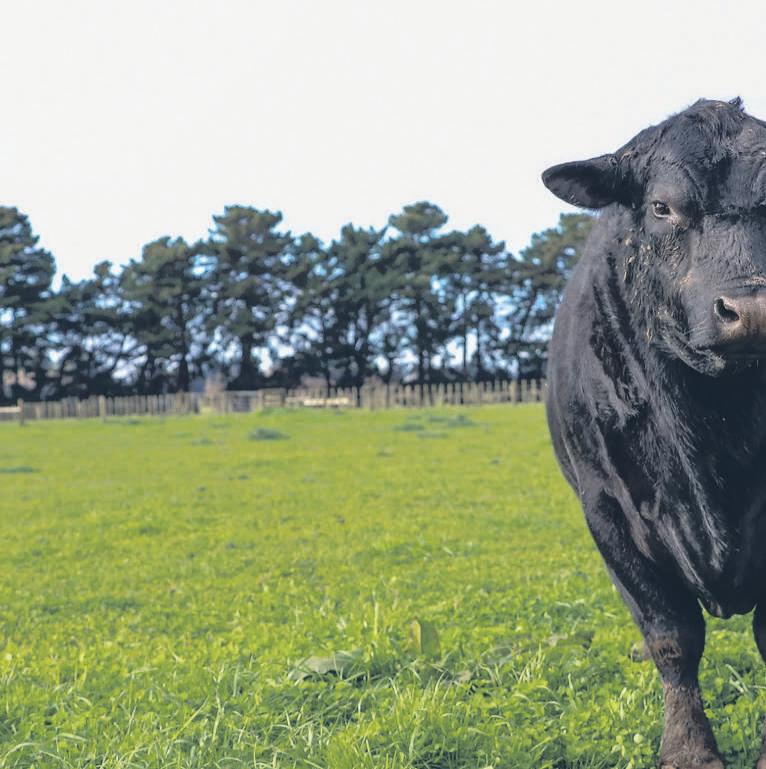







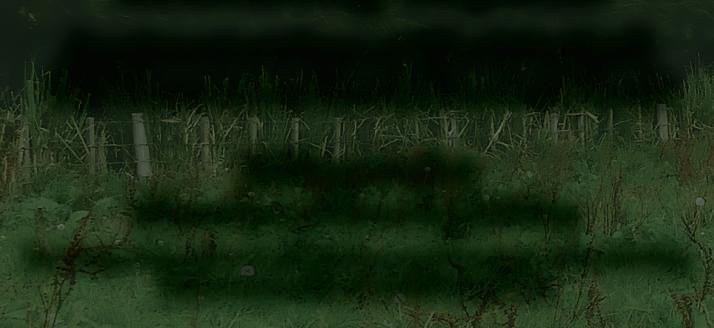


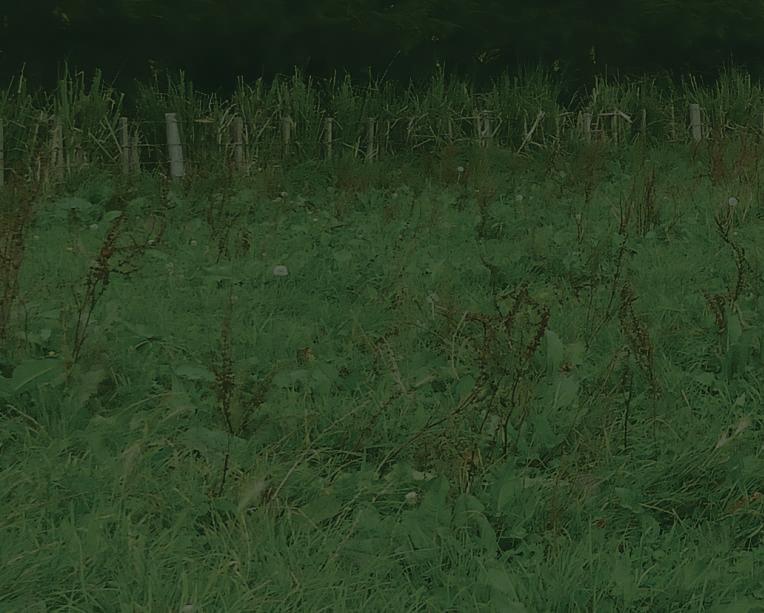

● May 16, B+LNZ and MPI
Tools and Tactics towards Resilient Farming Workshop, Waipukurau, Hawke’s Bay Showcasing the latest updates from Poukawa Research Farm, this workshop will explore opportunities to make farming systems more resilient.
Info at beeflambnz.com/events
● May 17, DairyNZ
First 100 days of a contract, Stratford Guest speakers will highlight the do’s and don’ts of the first 100 days on farm.
Info at dairynz.co.nz/events
● May 20 and 23, Dairy Women’s Network Pink Ribbon Lunch, North Otago and Dannevirke
Join a fun Pink Ribbon Lunch in support of the Breast Cancer Foundation NZ.
Info at dwn.co.nz/events
● May 21, B+LNZ
Farming For Profit Field Day, Kaeo, Northland
Learn how the Pamu Takakuri farm is achieving within the top 20% for Northland production and revenue per hectare for northern North Island farm class four benchmarks at this field day. Info at beeflambnz.com/events
● May 21, Dairy Women’s Network
Getting Financially Fit For The New Dairy Season, live webinar
Get fit and ready for the new season and get your business finances in shape so that you can enter the season in the
best position possible.
Info at dwn.co.nz/events
● May 23, Dairy Women’s Network
Maximise Returns From SupplementaryFeed,live webinar
SealesWinslow has launched an easy-to-use digital tool that helps you understand how to feed your herd so you can be more profitable.
Info at dwn.co.nz/events
● May 23, DairyNZ
Managing Your SCC and Mastitis Field Day, Horowhenua
An on-farm event to discuss all things mastitis. This will be an interactive workshop, catering for all levels on farm, with a focus on SCC and what is driving the numbers and trends we are seeing over the seasons.
Info at dairynz.co.nz/events
● May 23, SMASH
Spotlight On The System Field Day, Te Awamutu, Waikato
Hear from Andrew Macky, Waikato DIA Dairy Manager of the Year 2022 about his 300-cow operation, his excellent reproduction results and how he is using technology on-farm.
Info at smallerherds.co.nz/events
● May 28, Dairy Women’s Network
Get Ready For Nitrogen Reporting with MyBallance, live webinar
Feel confident using MyBallance and prepare your nitrogen data for reporting in June.
Info at dwn.co.nz/events
● May 28, 29 and 30, SMASH
Future Focused Finances Seminar, Palmerston North,Te Awamutu and Te Aroha
Hear from Pita Alexander, a well-known farm accountant and rural commentator.
Info at smallerherds.co.nz/events
● June4, Rabobank Financial Workshops ForFarmers, Marlborough
Presented by the team at Rabobank with the support of Beef + Lamb New Zealand.
These workshops are open to the rural community, including clients and non-clients. Each session will involve practical hands-on skills in understanding financial statements and banking requirements. Knowing your key numbers within the current season can help you take action if your budget or cashflow is deviating from plan.
Info at rabobank.co.nz
● June 5, Dairy Women’s Network
Calf Rearing Expo,Bayof Plenty
This expo is for anyone with an invested interest in raising happy and healthy calves, and in supporting their wellbeing and that of their team during the calving season.
Info at dwn.co.nz/events
● June 6, DairyNZ
On-Farm EfficiencyField Day, Tikokino,Hawke’s Bay Come along for a great day out on this large-scale operation of 4500 cows over three properties of Paul and Rosie
Franklin, joined by Farm Manager Gerard Boerjan.
Info at dairynz.co.nz/events/
● June 6, SMASH
Calf Rearing Essentials Field Day, Te Awamutu
Hear from farmers Lindy and Michael Bennett and guest speakers.
Info at smallerherds.co.nz/events
● Ballance Farm Environment Awards Open days,various dates and locations
Learn how the winners of this year’s awards operate their businesses. Info at beeflambnz.com/events
● B+LNZ
Trees Within Farms: Opportunities With Carbon, Farmerworkshops,various dates and locations
Trees are an important part of pastoral-based farming systems. This workshop will broaden your understanding of the value of trees within farms, and how to take advantage of carbon market opportunities.
Info at beeflambnz.com/events ■
Registration is essential for many events.Check out the various websites for more events.
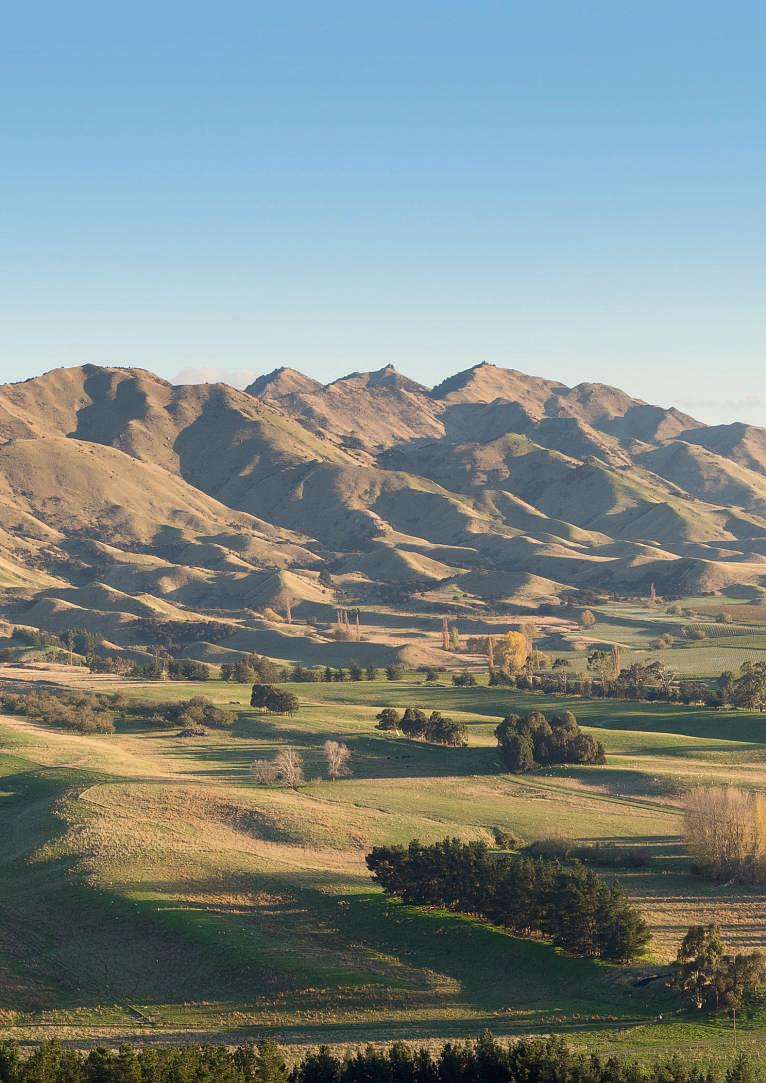

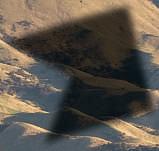





















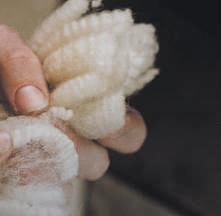






After moving home to her family farm 10 years ago, Nicola Wylie, 38, could have slotted herself into an on-farm role working beside husband Tom on their busy sheep and deer property in Southland, finishing in time to get the kids – Georgia, 11, Hunter, 8 and Alex, 7 – off the bus. Instead, she decided to change things up. Using the wool grown on their farm and a little-known finishing process, she created the Lora & Flok bedding range in September 2023.
I’m the fifth generation to be farming at Lora Valley – it’s such a beautiful spot.
We’re 50 kilometres from Invercargill in the Lora Gorge, surrounded by native bush. There’s a lot of history tied to this land–we’re very lucky to call it home.
I loved growing up on the farm, spending time outdoors and having so much freedom. I always hoped I would end up back on a farm, I just didn’t know it would be back here Tom and I met at Lincoln University, and after graduating we headed overseas together. Tom was shearing in Scotland and England, and I worked in pubs and as a nanny.
After our OE, we came home and Tom started working for my parents, while I drove into Invercargill each day to work.
Fast-forward three years and we were married and starting the journey of farm succession. I have a brother and sister, but neither of them were interested in farming, so we were able to start leasing the farm. Once our daughter Georgia was born, I quickly moved into the stay-athome-mum role. I loved being at home with the kids, but as they got older, I knew I wanted to do something for me – I didn’t want to work off farm, I wanted to be able to help out and I didn’t want to miss out on school camps or pet days.
Like all sheep farmers, we were fed up with wool prices continuing to drop I’ve always loved wool When I started reading about other farmers doing things with their wool, it motivated me. I suggested to Tom that we should have a go at doing something, and he was on board.
There’s been a lot of changes on the farm over the years, but the one constant has been the sheep.
We’ve been growing wool for 150 years, so it’s special to be able to create something with our wool that we can trace back to our farm.

We started brainstorming and talking to manufacturers to find out what wool processing was possible in New Zealand and what other products were in the market. We looked closely at our own wool and learned that it was quite highbulk and that this characteristic made it ideal for bedding.
I learned about a process called knopping, where the wool is turned into tiny, springy balls to become really resilient and incredibly lightweight.
Since knopping is a loose fill, it meant we could make a wool pillow that was fully adjustable. That, to me, was a massive benefit for people. I’ve been caught out so many times buying a pillow I thought was right, only to take it home and be disappointed. Unlike a traditional wool pillow that’s very heavy and can sink in over time, or a feather-and-down pillow that goes flat, as long as you fluff your
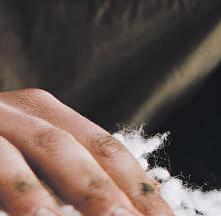


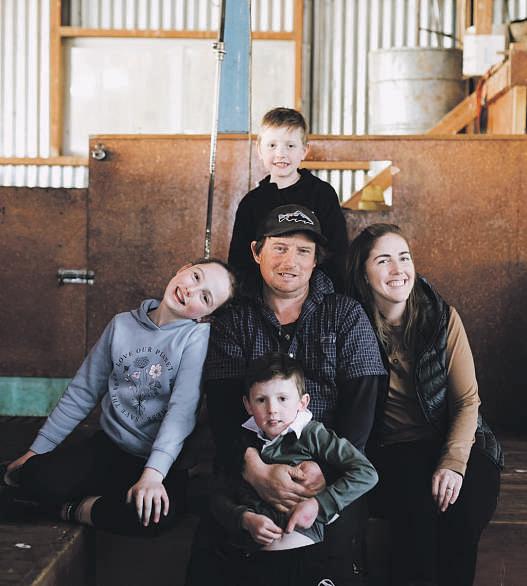

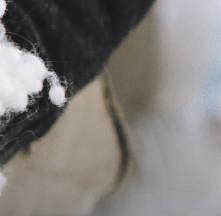

Main:NicolaWyliesays woolismorehumane thanfeathersanddown, andwon’ttrapheat–whichcanbearealissue forsomepeoplewho havedownbedding.

FRANCINE BOER PHOTOGRAPHY

TheWyliefamily: Georgia,Hunter, Nicola,AlexandTom inthecentre.“Idon’t haveamarketing background,”Nicola says “SoasfarasLora& Flokgoes,I’mfocusing onthethingsthatare importanttomeasa consumer–quality, well-madeproducts andgreatcustomer service.
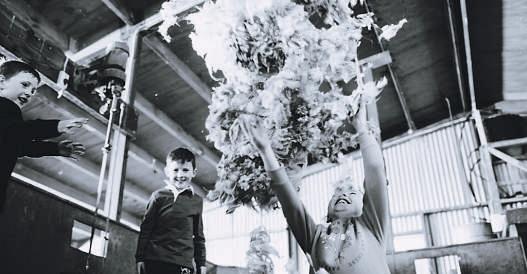

Lora & Flok pillow daily, it will naturally bounce back into shape time and time again
No two people are the same, so we decided to provide an extra bag of Flok Fill with each pillow. If you like a firmer, higher pillow, you add more fill; if you prefer a lower softer pillow, you just take some out. It lets you fine-tune exactly how you want it and then, once you’ve got it right, you don’t let your partner steal it!
When we learned we could also create a duvet from our knops, I got really excited.
Georgiaplayinginthe
I’m a hot sleeper and wool works so much better at keeping you from overheating than feather or down alternatives. But a wool duvet is heavy, so being able to make one that is lightweight and fluffy is a great benefit. I knew I wouldn’t be the only one who was waking up throughout the night from being too hot but didn’t want to sleep under a heavy wool duvet.
In terms of where to from here, we’re just seeing how it goes. We launched Lora & Flok to improve the return we get for our wool and to give me a role in the farming operation that I was more passionate about.
I’ve got a few ideas for new products, but we also need to focus on making sure people know about the benefits of wool – it truly is a wonder fibre, and farmers deserve so much more than what they’re getting for it. We’ve never known exactly where our wools ended up before, and to now be getting customers coming back telling us how much they love it is really rewarding. ■





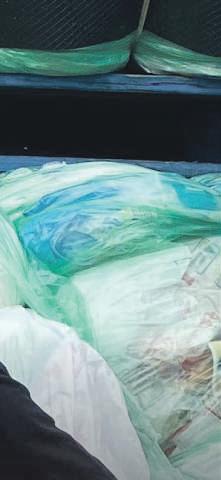


The company taking household plastics and turning them into fence posts is going from strength to strength.
By Bethwyn Littler.Soft plastic collection sites are on the rise across the country thanks to Jerome Wenzlick and his recycled fence posts.
Future Post takes milk bottles from Fonterra, curbside recycling, mussel floats, plastic pellets, water pipes and soft plastic collected at supermarkets.
“It’s amazing how many people keep all their soft plastic,” says Wenzlick.
“They do it because they know it’s going to get recycled here, not sent overseas or thrown in a dump.”
He does have to dump plastic that is contaminated.
The Waiuku-based company was established in 2018 and in July 2023 they opened a second factory in Blenheim The expansion has enabled more soft plastics to be collected in the top of the South Island.
“Nobody else will take the variety of soft plastic we do; different colours and thickness, some is laminated and some has foil in it,” Wenzlick says.
Future Post marketing manager Alastair Kirk recounts the story of how the company concept came to Wenzlick while he was doing a fencing job on a farm
“Jerome was ramming posts beside a rubbish dump and breaking a lot of them because he was hitting milk bottles in the ground. He went home and thought, there’s got to be a better way.
“He got a metal pipe, put a base on it, filled it with plastic and threw it in an incinerator. Once he’d separated the plastic from the pipe he looked at it and decided it was possible. He took that idea from proof of concept, then all the way to a working plant with finished goods.” Wenzlick had tried to find a machine that would deliver on his vision of

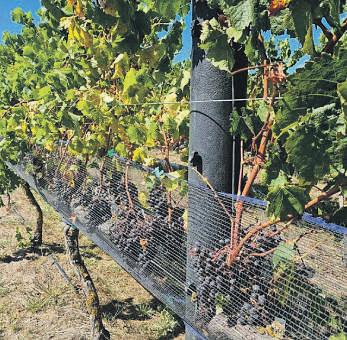

indestructible farm posts, however in the end he had to design and build his own.
The factory takes plastics numbers two, four, five and seven. They cannot take number one plastics because they melt at 290 degrees Celsius, which will burn the plastics they use in the posts.
Around 320 milk bottles and 1200 plastic bags go into making the average 125mm round pointed post. As of April 23, 20244,706 tonnes of plastic which has been recycled which equals 100 million
milk bottles and 672 million plastic bags.
Historically Future Post has supplied the agriculture and horticulture sectors. Recently the posts have become popular with vineyards because of their durability when exposed to strong winds and mechanical harvests.
Blenheim was a logical location for their second factory, in the heart of Marlborough’s wine-producing region.
Future Post also has orders from Tahiti and Vanuatu. Kirk says the islands are an
important part of their customer mix.
“We have sent multiple containers to both Tahiti and Vanuatu and will continue to develop that side of the business. The environments over there are harsh, with salt water, wet ground, insects, humidity, temperature and sunlight which makes our products ideal. The posts are impervious to the conditions that make others fail.”
In the beginning it took a lot of trial and error to perfect the posts.
“The key is getting the right mix,” Wenzlick says. “Like baking you have your main ingredients, milk, eggs and flour and you can throw in a few extras As long as you have your basic recipe right you still get a good cake at the end of it. As long as our basic recipe is right we can throw a few hard-to-recycle pieces into the mix.”
Robyn Budd and Hamish Browne have been using Future Post fence posts on their organic beef farm in Waikato for more than five years. They have replaced around half the posts on their 260 acres in Mangatanga.
“We have quite tight country around here so it’s not easy fencing with anything. You can’t hit them full bore, you have to slowly put them into the ground,” Browne says.
“You can’t just pull the monkey right to the top of the mast and let it go smashing back down or it might smash the post.”
Two posts did split when they were rammed too hard and these were returned straight back to the factory to be recycled. Budd and Browne also had to rethink the staples they used. Rather than a traditional staple they needed one with parallel sides.
The posts are black because they contain carbon (2%) for UV stability. Wenzlick says it means the posts will last for a lot longer than a traditional wooden post. UV light testing has given them a lifetime of at least 50 years.
The philosophy of recycled posts has struck a chord with the Waikato couple.“Plastic is the biggest issue the world has,” Browne says.
“If we can get rid of some of this rubbish before it gets into our waterways and oceans it’s got to be good.” ■
Preparations for New Zealand’s biggest tech and innovation festival that will transform business, educators and our community in the digital year ahead, are well underway and entries are now open.
Techweek is the country’s premier annual festival of tech innovators,firms,products and users.It’s the week that Aotearoa New Zealand sees tomorrow’s tech first.
Techweek24 is a nationwide series of events,showcasing and celebrating New Zealand innovation and provides a platform were people can meet,share ideas and create connections to enhance the future world It also aims to promote our technologysuccess and opportunities to the Kiwi public and the world,and advance the growth of tech.
Created and run byNZTech and the Hi-Tech Trust in 2012 to coincide with the Hi-Tech Awards,the event aims to build enthusiasm around newtechnologies being developed in NewZealand It has since grown from several events to a high of 562 events in 2019
The nationwide programme is developed and curated locallybyTechweek’s regional partners.With local programmes and events created bylocal people,Techweek New Zealand is globallyunique in presenting a grassroots,authentic national festival that accelerates the growth of NewZealand's












impactful tech sector.
Each year,NewZealand’s tech entrepreneurs and innovators create incredible newtechnologythat will enhance lives in the year ahead and beyond.
Techweek is where you can experience that tech first – so you’re equipped to make tomorrowbetter for your business,educators or community.
The overall theme for Techweek24 is: Tech That’s Good For The World.It will explore six pillars that showcase howtechnologycan help keep people connected,the economy active,and howNewZealand can become a tech hub for thought leadership.
These pillars are:
■ Tech for the World
■ Sustainabilityand Climate
■ Good Health and wellbeing
■ Diversityand talent
■ Gen and AI
■ Digital safety.
Aspokesperson for Techweek24 says some of the events on the programme include games,robots,sustainabilityand
the GenAI pillar,exploring the seemingly endless possibilities in this evolving space.






diversity,cybersecurity,deep tech and more.
TechStep and Techweek24 have teamed up to bridge the gap between the tech sector and individuals bybacking select events throughout regional Aotearoa.These events will showcase the diversityand talent within the tech sector,serving as a source of inspiration and information for individuals considering or pursuing a tech career
Auckland Business Chamber chief executive Simon Bridges says theyare looking forward to working with the Techweek24 team to support diversityand talent.“TechStep is all about unlocking the potential of the rapidlygrowing tech sector in Aotearoa.We understand the importance of not onlythe careers of todaybut also the careers of tomorrow.Tech is constantly evolving,and we need to be readyfor the challenges and opportunities that lie ahead.
“We believe NewZealand has the potential to be a leader in the international tech story and TechStep is here to ensure our future workforce is readyto take on the challenge.”
Deloitte and Techweek will be presenting
Deloitte NewZealand is excited to showcase the power of GenAI,and to encourage and empower people and businesses across New Zealand to embrace the opportunities it provides.
Deloitte will provide cross-industryinsight on what organisations across NewZealand are doing in AI,and hold technologyalliance relationships that provide aviewof GenAI roadmaps and an end-to-endviewof the implications of GenAI from the impact on people to the art-of-the-possible.
“The AI landscape is constantlyevolving and we’re working just as fast to stayup to date ourselves,so we can pass on our learnings from this exciting technological advancement to all those who have an interest in the potential of GenAI and the possibilities it unlocks forourfuture,”Deloitte NewZealand partner,David Lovatt says.
“Through our work,we hope to empower people to make informed and well-rounded decisions for the safe use of GenAI in their organisations.”
NewZealand Trade and Enterprise (NZTE) has also partnered with Techweek24. Together,theywill present the ‘Tech for the World’pillar,which will see events across the motu that showcase NewZealand’s many inspiring global tech stories,as well as events that help prepare Kiwi tech entrepreneurs and leaders to take their innovations to the world.This partnership also provides an opportunityfor the tech ecosystem to discover the resources and support NZTE provides to exporting tech companies.
“NewZealand continues to produce amazing tech businesses that achieve significant growth in markets around the world – from medical technologies to aerospace,”says NZTE’s sector lead for manufacturing,technologyand services, Richard Cotman.
Techweek24 runs nationwide from May 20 to 26. ■


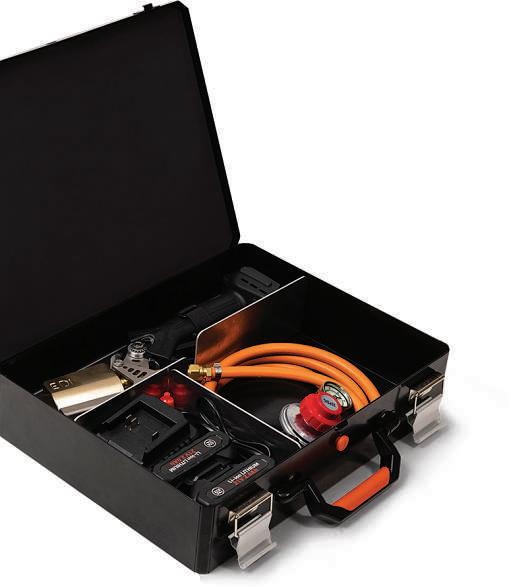

Inthe heartofNew Zealand's economic 'Golden Triangle,' there's an unmissable event that not only spotlights the vitality and innovationofour primary industries but also acts as abridge between urban and rural New Zealand.
Fieldays, returning to Mystery Creek in June 2024,isnot just an agricultural event; it's atestament tothe spirit of innovation,globalisation, connection, sustainability, education, and advocacy in Aotearoa.
For over half acentury, Fieldays has championed agricultural innovation and served as alaunching platform for countless New Zealand businesses. Its 56th year promises to be no different, with the highly anticipated Innovation Awards set to showcase the brightest mindsand groundbreaking solutions in agriculture. This dedication to innovation has not only solidified Fieldays' status as the largest agribusiness event in the Southern Hemisphere but also as acritical catalyst for the food and fibre sectors.
Global reachwith alocal touch
Fieldays 2024 puts New Zealand at the forefront of the global primary sector. It draws exhibitors and visitors worldwide to learn, share knowledge, and engage with industry leaders. This event serves as ahub for international collaboration, showcasing New Zealand's agricultural excellence on aworld stage. Yet, at its heart, Fieldaysnurtures alocal community spirit rootedin NewZealand's rich agricultural heritage.

The fabric of connection
One of theevent's cornerstones is its abilitytobring together individuals from town and country, creating avibrant community where knowledge, ideas, and innovations are freely exchanged.
Fieldays is anannual pilgrimage for many to Mystery Creek to reconnectand it’s aplace where multi-generational farming families rub shoulderswith thosecurious about the backbone of New Zealand’s economy.
Whether it's through discussing the future of farming at the new Fieldays Rural Advocacy Hub in collaboration with Federated Farmers or exploring career opportunities in the Fieldays Careers and Education Hub, Fieldays is where connections are made, and futures are forged.
Sustainability and Advocacy at its heart
Fieldays 2024 alsoheralds asignificant focus on sustainability and advocacy, recognising theseascrucial to the future of farming in New Zealand. The Fieldays Sustainability Hub,alongside the Fieldays Hauora Taiwhenua Health & Wellbeing, Forestry,and Digital Futures Hubs,signify Fieldays' commitment to not only discussing thesevital issues but actively seeking solutions and advocating for change.
In aventure that speaks volumes about the event’s collaborative spirit, the involvement with Federated Farmers in the establishment of anew hub showcases aunited front for discussing and tackling issues that affect the very future of farming and food production in our nation.
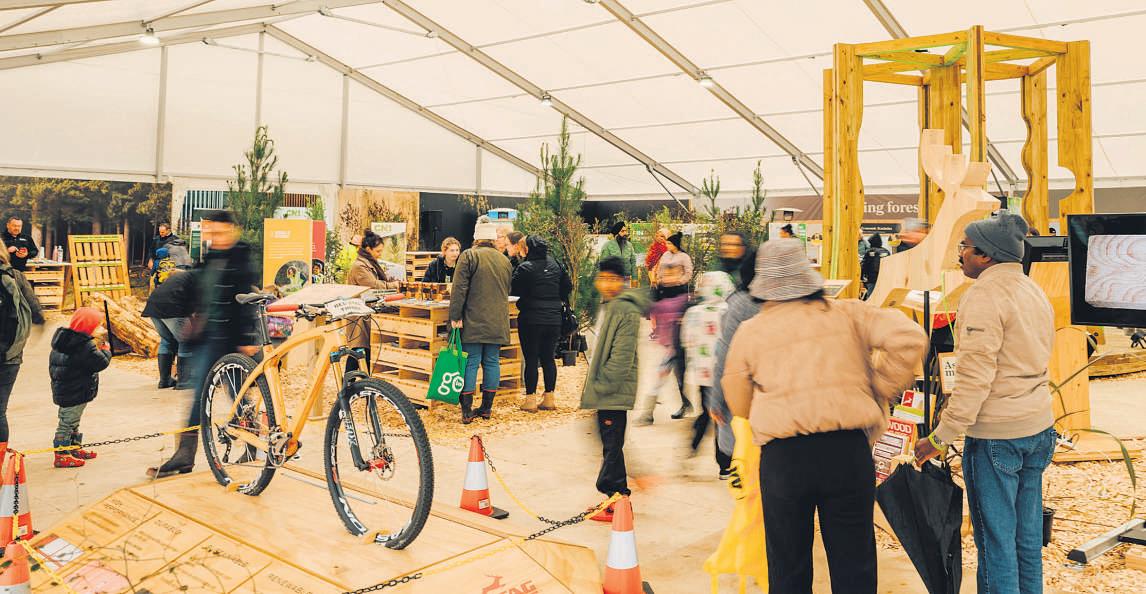
"It Starts Here" –A celebration of new starts and continuous growth
The themefor Fieldays 2024,"It starts here," reflectsthe essence of what the eventstands for -abeginning point for new careers, connections, ideas,and even challenges overcome throughinnovation and resolve. It's an acknowledgement of how each iteration of Fieldays contributes to the ongoing development and growth of New Zealand's agricultural industry.
Fieldays is more than an event; it's acatalyst for growth, a forum for innovation,and acelebration of the primary industries that lie at the heart of New Zealand’s economy.
Fieldays is aplace for not only businesses to connect but friends to connect.
Families come to the event to meet up and have aday off-farm.There is alot to see and do showcasing the rural sector –competitions that champion the sector –FieldaysTractor Pull, Fieldays Fencing Competition.
The tales set to unfold in June 2024 will undeniably enrich its legacy, instilling pride in ournational identity and the impact we have on the global stage.
Whether you're directly involved in agribusiness or simply curious about the future of food and fibreinNew Zealand, Fieldays 2024 promises unparalleled insights into the sector that feeds nations. It's an invitation to explore, learn, and contribute to asustainable future.

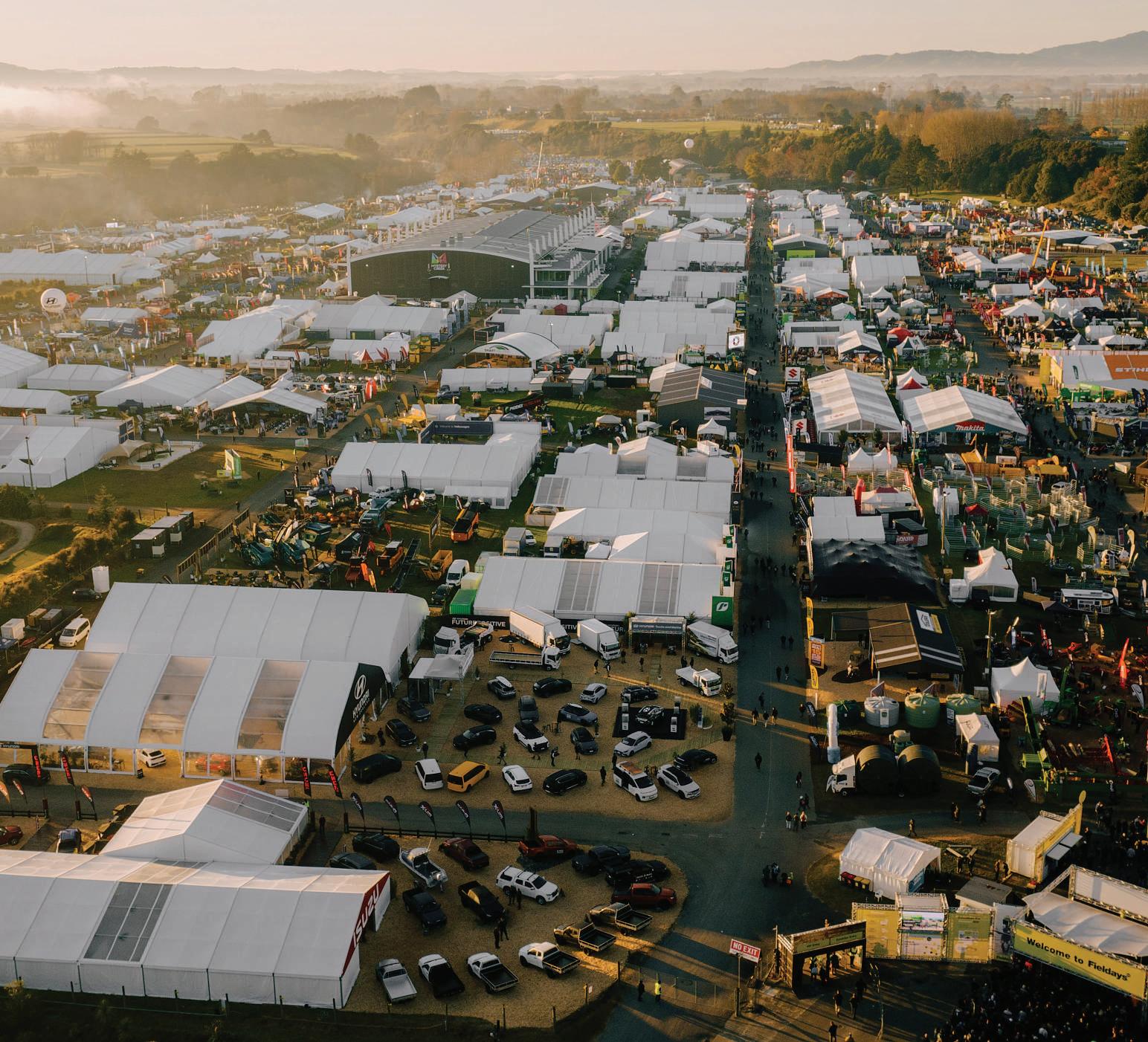

After more than half a century, Piquet Hill Farms has moved its operations from north Waikato to south Waikato. By Bethwyn Littler.
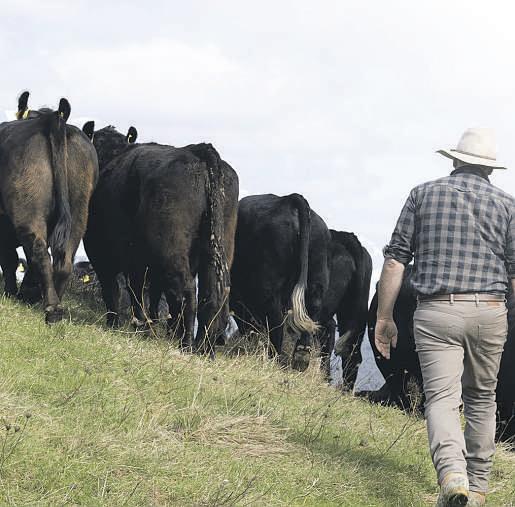
After more than half a century, Piquet Hill Farms has moved its entire operation down the road.
At the end of March, Will Jackson and his partner Nicola Bradstreet packed up their family and livestock, moving from Te Akau to a new 1364-hectare property named Stockland in Wharepūhunga, south of Te Awamutu. Their former farm has been sold and the majority will be planted in production forestry.
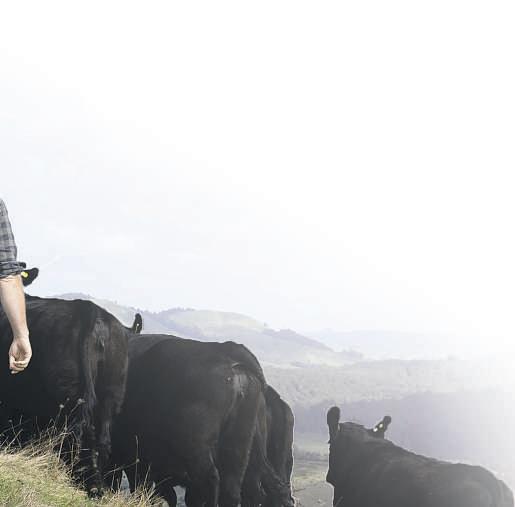
that all their staff continued their support by making the move with them.
“Nicola has been a huge part of making it all happen,” Jackson says. “Her parents have been incredibly supportive allowing us to lease their farm.”
Bradstreet grew up on her parents’ 380ha property 10km down the road, which they have started to lease. The couple’s oldest child Matilda is set to start school in August at Korakonui Primary, the same school that her mum went to.
Stockland had been farmed by Leveson and Vicki Gower Leveson’s parents, Alec and Agnes, purchased the bare bush block off Lands and Survey in 1954.
were within the business to remain relevant and profitable. “Having to sell to forestry was a decision we didn’t take It was obviously a tough one because we’re extremely proud of what we had achieved at Te Akau,” Jackson says.
In 1950, his grandfather used his return serviceman’s grant to buy the original farm in Te Akau; however, name Piquet Hill can be traced to Awamutu in the 1860s where his great-great-uncle named his Orakau farm Piquet Hill.
Jackson says the new is beautiful with large stands of native bush and two significant rivers running through it. “It’s a pretty spot. And we are very fortunate to have been given the opportunity to call this unique property home.”
With a multitude of challenges facing the farming sector, it had became apparent to the couple that strategic changes were required within vant lightly. because used the the Te eat-great-unc Piquet property of ver magical ve to prop they led
He says are humbled by the fact


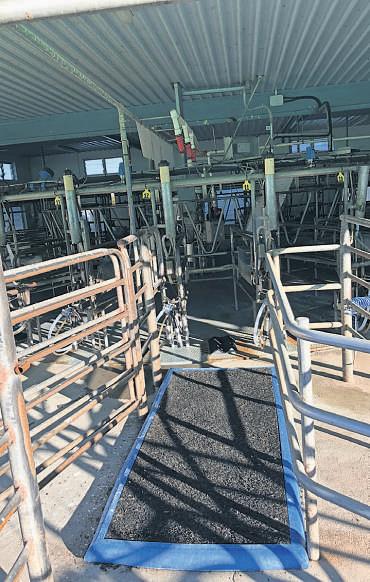

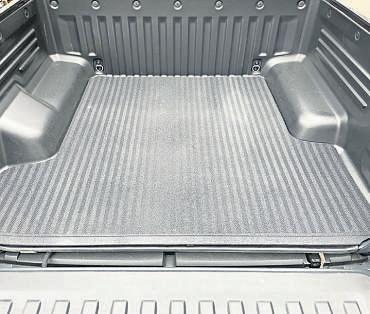


“The Gowers have been amazing to deal with,” Jackson says. “We bought a farm but have got so much more with it.”
The property had been developed into a high-producing beef cell grazing system. Setbacks were created to improve water quality, and they had also planted and protected several areas of native bush on the property.
The couple do not take their new roles lightly. “Like all farmers, we are stewards of the land, forming and preserving our farms for future generations,” Jackson says.
Bradstreet refers to the different parts of the new farm as different ‘rooms’, all having independent character and charm. One of the highest points on the farm has a view of Maungatautari Mountain and on a fine day Jackson says you can see out to the Hauraki Plains.
His father Peter Jackson was wellknown in the agricultural industry and had a huge influence over the profile and direction of the breeding operation
“My father was one of the original breeders in the Romney development group, as well as a pioneer in the development of facial eczema (FE)tolerant sheep. He had very basic breeding principles which have stood the test
If you sufferfrom... Aches &Pains? Arthritis?Heart Disease? Injuries? Gout? Inflammation? Joint Pain? Migraines? Macular Degeneration? Diabetes?
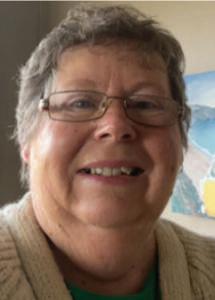
Isuffered from, Asthma,20Kg overweight, chronic inflammation, Limphadema in my Legs, Arthritis and Aches andPains and astooped back but not anymore!
2capsules can help your body release 25% Morecirculating stem cells



of time and I still use these ideas today in both our sheep and cattle breeding operations.”
Jackson says there have been a lot of changes in the sheep breeding industry, but with change comes opportunity
“We have developed the Sheddmaster, a wool-less sheep which we have started to commercialise in the last couple of years. With the poor price of wool and the high cost of shearing, there has been a big uptake this year and we feel we are ready to take this breed to the next level.”
He says they created the Sheddmaster breeding composite by using maternal composite ewes and shedding rams.
“In 2017, one of our biggest customers said they loved our sheep but needed to go wool-less. They gave us five years to come up with a sheep. That is what really kicked us off We are now running 1000 Sheddmaster ewes and 400 hoggets.
“We crossed FE-tolerant Wiltshires



and other shedding rams over maternal composite ewes and selected from the bare and full shedding females, then backcrossed the full shedding half-bred rams back over them.”
Essentially, they are trying to breed a maternal composite without wool.
“It is slower than breeding up, but we feel it is important to maintain as much maternal composite in the breed to lock in those base performance traits of growth, fertility, FE-tolerance and worm resistance that have made the sheep so successful in the past.”
He says he is focused on internally breeding his own sheep, rather than out-crossing with outside genetics “I’m very much trying to develop the sheep by internally producing sires within the flock. By doing so, I have far more control over the performance outcomes we focus on. The sheep are becoming phenotypically standardised. Their performance is becoming more predictable as the sheep become more uniform.”
The Angus stud is also starting to kick into gear with preparation for the third annual bull sale in September. The couple are developing their bulls with the same breeding principles as their sheep.
“We are laser-focused on the needs and outcomes of commercial farmers and preparing stock that suit and handle varying environments.”
Bradstreet says they are also developing a strategy to diversify and showcase the property to the public. “We are currently developing a significant agri-tourism opportunity, so watch this space.
“With a young family, it’s time to consolidate and plan for the future,” Jackson adds.
Piquet Hill Farms has moved stands at the Fieldays this year but will still be in the main pavilion (PD39). They will be showcasing their plans for the property, hoping for public feedback. ■
Sure the weather may be getting a bit nippier and the days shorter but there’s still so much to see and do in New Zealand’s great outdoors.
Whether you have some holidays planned, or you are waiting for a break later in the year, here are four South Island tramps to take your breath away. Before you head off, make sure the walks are easily achievable for you and your group, start early and stick with a turnaround time, just in case the walk takes longer than expected, and pack a head-torch, extra warm layers of clothing, and a raincoat.
Barnicoat Walkway, Nelson
One to take the pooch with you, this is a 6km loop track through pine forest on Barnicoat Hill.
It takes about three hours and there are some steep sections, but you’ll be rewarded with spectacular views at the top over Mt Richmond Forest Park and Tasman Bay.
This is a shared walkway with bikers, so your four-legged mate must be on-leash at all times.
Hogs Back Track, Canterbury
Another pet-friendly walk is this shared use walking/biking track. It can be done
one-way in around two hours but will require a car shuttle, or you can return the way you came.
For a three-hour return walk, head up to Picnic Rock and enjoy lunch and awesome views across Castle Hill basin, before retracing your steps
Lake Daniell Track, West Coast
Another one to bring the family tramping, even young kids, is this track in Lewis Pass on the West Coast
The 8.4km walk takes about three hours to the 20-bed Kōhanga Atawhai –Manson Nicholls Hut, crossing the Maruia River.
The hut sits at the lake’s edge and has outdoor fire pits – perfect for this time of year! Bookings are required.
Aspiring Hut, via West Matukituki Track, Otago
This 9km family-friendly tramp takes about 2.5 hours and is part of the West Matukituki Track. Starting at the Raspberry Creek carpark, the track crosses grassy farmland flats and there are a couple of easily negotiated small bluffs, providing views up and down the Matukituki Valley.
There is a warden at the hut until the end of April but from May, you’ll need to take your own gas cookers. ■
Winter may be closing in but there’s still so much to see and do in New Zealand’s great outdoors
By Alan Granville.


These four North Island tramps will take your breath away.
Mt Karioi Track, Waikato
Not for the faint-hearted, this challenging six-hour day walk to the summit of an ancient volcano is well worth the effort for the vistas alone. Stunning views of all the local harbours as well as Pirongia, Maungatautari and Te Aroha mountains await and on a really clear day, Herangi Range, Mt Pureora and even Mt Taranaki may be seen.
There are chains and ladders, which have been installed to help you over some rocky outcrops, but if that all sounds a bit much, there is a shorter, less steep option to the top of Mt Karioi, using the Wairake Track.
Waitawheta Tramway Track, Bay of Plenty
One for the family, this three to fourhour walk (one-way) follows a historic tramline, which operated between 1898 and 1928.
It’s a total of 19km for the return trip, and the track is relatively flat and wide through the spectacular Waitawheta Gorge
There is a river crossing with a bypass track, so best to check the forecast before heading out. If heavy rain is coming, you should not attempt this track. Plan My Walk has all the track details as well as a link to the latest weather forecast.
Rotokare – The Lake Walkway, South Taranaki
The 4km, two-hour track winds through the pest-free Rotokare Scenic Reserve, inland from Eltham in South Taranaki.
The first 600m is wheelchair and buggy

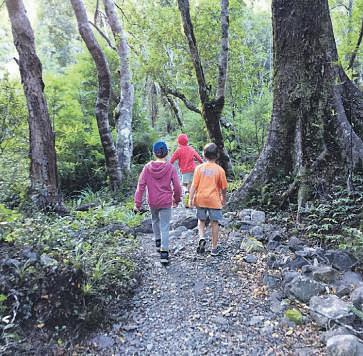

friendly, and there’s a wetland boardwalk leading onto a floating pontoon that’s also accessible. It’s a great place to just stop and hear the abundant birdlife, including the likes of kiwi, ruru/morepork and kārearea/New Zealand falcon.
Atiwhakatu Track, Tararua Forest Park, Wairarapa
Looking for an easy overnighter? The Atiwhakatu Track to Atiwhakatu Hut is a great option in the Wairarapa. Following the Atiwhakatu Stream, the 7km track to the hut includes several easy bluffs and a swing bridge.
Families can expect the walk to take up to four hours. If you are a more seasoned tramper, you could consider this as a stop on the classic multi-day Mt Holdsworth –Jumbo Circuit.
Five top tips for changing seasons
Set yourself up for success as you plan outdoor adventures over the next few months. Be prepared for changing daylight hours, weather and temperatures, and the temptation for one final push before winter. Here are the NZ Mountain Safety Council’s top tips:
■ Choose the right track for you and your group
■ Pack your extra layers, head torch and raincoat
■ Get out of the hut door and onto the track early
■ Plan your turnaround time and stick to it
■ Don't let the onset of winter drive your decision-making.
Remember to always follow the NZ Land Safety Code when exploring our great outdoors. With the NZ Mountain Safety Council ■


History buffs, adventure seekers, wine enthusiasts, there’s a river cruise for all.
By Emma StanfordIf you’re curious about a cruise, but the thought of so many people puts you off, maybe a river cruise is for you. With fewer people, and a chance to get closer to the destinations, you can travel on some of the world’s most famous waterways in cities often built around them. It’s like a hotel on the river with palaces, temples and ruins right at your balcony. Here are five river cruises to consider in 2024
Douro River Valley Cruise - Uniworld
Looking for a solo getaway? Uniworld Boutique River Cruises is waiving the single supplement on some of its most popular European itineraries, including one down Portugal’s Douro River.
On your way to Spain, cruise past steep hillsides in the UNESCOdesignated Douro Valley and acres of ripe vineyards, responsible for the country’s wine and famous port
Add on three days in Lisbon to keep the Portuguese holiday going. See: uniworld.com
Luxury Mekong Cruise - Heritage Line
Discover Vietnam and Cambodia by the lower Mekong River, starting in Saigon, float to Phnom Penh where you’ll see places such as the Royal palace and the silver pagoda, before a history lesson about the Khmer Rouge regime
Enjoy a balcony from every room and a four-poster bed on the sevenday cruise that ends in Siem Reap. Pick from two vessels, the Jayavarman with a French-Colonial interior or the Jahan, which evokes the former British-Indian style.
See: heritage-line.com
Danube River Christmas River Cruise - Nat Geo Expeditions
Christmas markets in Europe are something magical and this cruise lets you savour all that the cities on the Danube River have to offer.
From Budapest to Vienna to Salzburg to Passau, browse stalls with handmade ornaments, treats and gifts, with
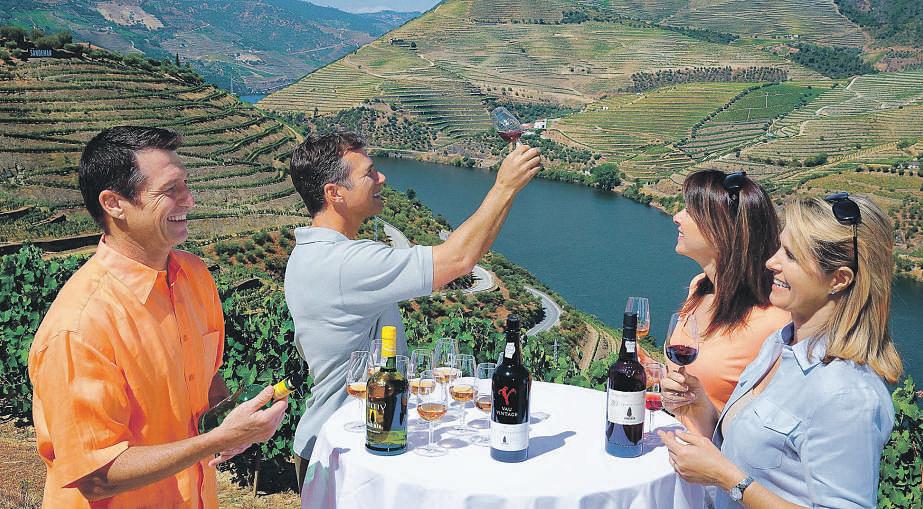

mulled wine in hand. See medieval towns Regensburg and Melk in their holiday best all while learning to shoot photographs at night with a National Geographic photography expert
See: nationalgeographic.com/expeditions
Taste of Egypt - Avalon Waterways Spend days exploring the pyramids and ancient sites in Cairo before flying to Luxor to board the state-of-the-
art, luxurious boat. Start your cruise down the world’s longest river, the Nile to Aswan, visiting the valley of Kings and Valley of Queens, and King Tutankahmun’s tomb along the way. The 10-day trip can be extended to add on a visit to the Dead Sea in Jordan.
See: avalonwaterways.co.nz
Aqua Nera - Rainforest Cruises Choose from either a four, five or eight-
It’s like a hotel on the river with palaces, temples and ruins right at your balcony. “
day cruise down the Amazon River from Peru.
It’s sure to be a trip of unique experiences, as you search for pink river dolphins, take jungle walks to look for poison dart frogs and go piranha fishing. However, if bird watching, market perusing and visiting a manatee rescue centre is more your scene, you can do that too.
See: rainforestcruises.com ■
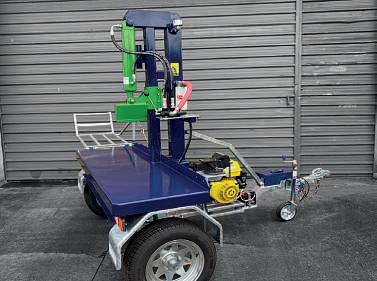




























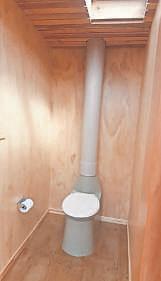
First quarter red meat export data shows smaller Chinese market but signs of recovery in Britain and Japan, as well as good demand from the United States.
New Zealand exported $2.58 billion worth of red meat products in the first quarter of the year as the sector continues to face weaker pricing and demand in China.
Overall, red meat exports were down by 5% from the first quarter of 2023 – the lowest value for the quarter since 2018, according to an analysis by the Meat Industry Association (MIA).
MIA chief executive Sirma Karapeeva said the weaker Chinese market was partly offset by good demand from North America and there were signs of some recovery in the United Kingdom and Japan. However, China was challenging, with exports down 27% to $796 million.
Most other top markets remained steady or increased. Exports to the US were up by 11% to $658m, the UK by 44% to $126m, Japan by 26% to $117m, and the Netherlands steady at $114m. However, exports to Korea dropped 30% to $46m for the quarter, and exports to Germany dropped by 18% to $62m.

Sheepmeat export volumes were up 3% to 119,244 tonnes, and beef by 2% to 129,375 tonnes. However, the value of sheepmeat
was down 5%t to $1.04 billion. Beef remained unchanged at $1.08b.
Karapeeva said it was encouraging to see the positive performance of chilled products. While the volume and value of frozen exports was down or unchanged, chilled exports of both sheepmeat and beef had increased.
Chilled sheepmeat exports increased 17% byvolume to 13,202 tonnes and 11% by value to $204m on the first quarter of last year. This included China, with an increase of 40% byvolume to 107 tonnes, and 61% by value to $3.4m.
Chilled beef exports increased 26% by volume to 9112 tonnes and 28% byvalue to $141m.
“The high-value chilled meat offering is largely as a result of innovation and research and development in processing and packaging, which is providing a longer product shelf life.
“While this is still a small volume compared to frozen exports, it reflects the work New Zealand processors and exporters are doing to create value add products and to meet changing market demands.”
Fertiliser stocks on the path of recovery
The Chinese export quotas of phosphorus fertilisers have been set at a maximum of 7m tonnes – 5m for DAP and 2m for MAP –but the nitrogen quota remains uncertain.

The decision mirrors the 2023 figures and signifies a 27% recoveryversus 2022 export volumes, which were the lowest exports in the past five years. Since early November 2023, exports have been suspended in an effort to exert downward

pressure on local fertiliser prices. As a result, DAP sourced from Morocco has been steady, hovering around USD$600/ tonne FOB level. The outlook for the next five months suggests a potential drop of up to 15%.
Unfortunately, this timing may be too late for winter crops and pasture. However, there remains hope that the adjustment will align with spring and summer demand.
Chinese nitrogen fertiliser manufacturing is operating at a significantly higher pace compared to the same period last year, approaching 200,000 tonnes per day.
However, there is a critical factor at play: the lack of clarity regarding governmentdefined quotas. Some official guidance is expected in mid-May. Without this clarity, the only foreseeable outcome is the accumulation of surplus stocks, exerting a


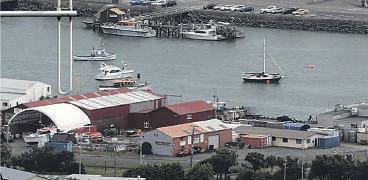
bearish pressure on the market, potentially impacting the next two to four months. What to watch:
■ Fertiliserfeedstocks – The price of natural gas is forecast to remain neutral for the next months. However, there are critical factors to consider. The European stock levels are above the five-year average for late winter, which suggests that prices may ease slightly. The challenge lies in the reliance on storage facilities in western Ukraine. Unfortunately, these are under attack by Russian forces. If these attacks continue and lead to temporary closures, Europe could face a situation of insufficient stocks even before the next winter season (end of 2024). Maintaining stable stocks and prices becomes tricky under such circumstances. Geopolitical tensions at Europe’s doorstep and a fragile economy add complexity.
Geopolotical tensions continue to play a major role in the price.
Freight rates have adjusted downward after the initial shock from the Red Sea conflict, although vessel passage through the Suez Canal remains severely limited. Conflicts and forced vessel re-routes are likely to persist into the second half of 2024, although newvessel and container capacity coming online should help alleviate constraints
MIA expects 2024 to continue to be marked byvolatility, driven by global events, uncertainties stemming from the US election, possible labour-related disruptions – such as the East Coast port labour contract talks in September – and weather or climate change disruptions. ■


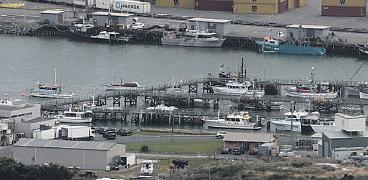


Geopolitical tensions continue to have an effect on shipping costs.















EXPERIENCESTHATCHANGE HOW YOU SEE THE WORLD
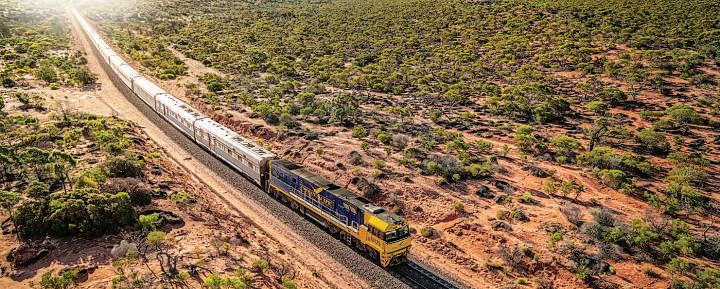
AirtravelfromNewZealand,MaherToursGuide,hotel,meals
Celebratethe festiveseasonaboardopulentSeabournEncore, 14-day cruise throughSoutheast Asia. This voyageoffersa perfect blendofrelaxation, culturalimmersion, stunning landscapes & diverseculturesinvitingyoutosavourtheallureofSoutheastAsia.

Priceincludes:AirtravelfromNewZealand,MaherToursGuide,hotel,meals,transport
14-day rail journeyinAustralia, celebratingChristmas in style indulginginworldclass “Gold Service” Cabin. Experience thevastness of thecountry in comfort aboardthe “Indian Pacific”fromPerth to Adelaide. Then, enjoythe scenic splendor of the“GreatSouthern” from Adelaide to Brisbane, inc. arange of excursions.


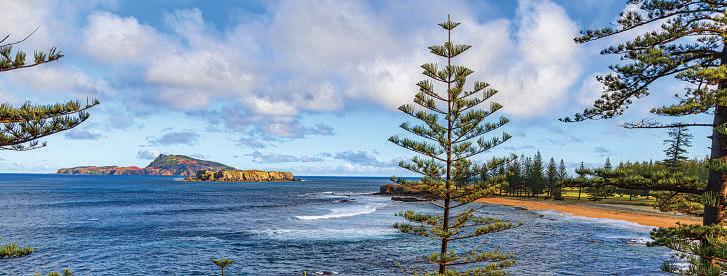

AirtravelfromNewZealand,MaherToursGuide,hotel,meals
The Murray River, at over 1600 mileslong, Australia’s largest river playedamajor role in thesettlement anddevelopmentofinland partsofAustralia. 7nights cruisingupstream andstoppingatan aboriginal archaeological siteatNgaut Ngaut Conservation Park
Priceincludes:AirtravelfromNewZealand,MaherToursGuide,hotel,meals,transport
Wherehistorymeets paradise, experience the“Norfolk Wave.” Explorelush forests, pristinebeaches, andcaptivatingcultureinthis South Pacificgem. In NewSouth Wales, from theiconic Sydney Harbour to thestunningBlue Mountains,immerseyourselfinatapestryoflandscapes,cultures,andexperiences.




AirtravelfromNewZealand,MaherToursGuide,hotel,meals
World’sleadingsmall ship cruiseline, destination focused &culturallyenriching,28-nightsaboardtheVikingNeptune.Onboard cultural enrichment program, Viking Resident Historian faculty offerlecturesonupcomingportcultures,worldhistory,andarts.



Priceincludes:AirtravelfromNewZealand,MaherToursGuide,hotel,meals,transport
Journeythrough 5,000 years of Chinese historywith theancient andmodern standingside-by-side. Spend4nights cruisingonChina’s longest river, Yangtze. Three greatgorges is regarded as oneofthe greatest scenic attractions in China. We then spend8 nights in Mongolia, alanddefined by boundless steppes.


